|
Go to on this page:
DRIVERS
CROSSOVER CABINET MEASUREMENTS
SPEAKER-KIT
CROSSOVER LAYOUT
WORKSHOP
PICS
This is the combined presentation of the Ellipticor-A50 and
Ellipticor-A50-II, now Ellipticor-A50-mkII. There are changes to the
crossover as the first iteration was more than two years ago and it
turned out - as often is the case - that we could get the same for less.
Those who have built the Ellipticor-A50 and Ellipticor-A50-II need not
worry. Stick to what you have.
Go to
picture gallery of speakers made for ScanSpeak exhibitions.
Download mkI versions here:
ScanSpeak-Ellipticor-A50 (pdf 23 MB) and
ScanSpeak-Ellipticor-II (pdf 35MB)
2020:
ScanSpeak
Ellipticor-A50 is a loudspeaker created to celebrate 50 years of service
in speaker driver manufacturing. Since 1970 speaker drivers have been
produced under the ScanSpeak brand name and countless models, from
economy drivers to some of the most sophisticated and expensive
transducers the hifi market has seen, has been produced. The ScanSpeak
history
here
by Claus Futtrup.
The construction here is based on further
expansion of the
Ellipticor series and you will find new models never seen before,
like a 15" bass driver with elliptical voice coil, a large elliptical
midrange dome with double spider and exceptional flat frequency response
- and icing of the cake - a 24 mm elliptical dome ensuring delicate
handling of overtone structure. All ingredients for making state of the
art speaker constructions - if we do well! The crossover is the heart of
any speaker construction and can be tuned to personal taste and specific
acoustic conditions, and a four-driver speaker can be put together in
countless ways and here's my take on these new and exiting drivers.
What was meant to be a springtime celebration
at Munich High End Show, May 2020, was delayed until 2022 due to corona
virus and all the things that followed, like delays in shipping, etc.
Writing these preliminary lines here in April 2020, where the pandemic
has affected almost all parts of the world in ways we haven't seen since
the Spanish flu a century ago, is really strange. This is going to
impact our lives years ahead, but here and now, the sick must be nursed,
children must be taken care of, schools must operate under restrictions,
food must be produced - and speakers must be built.
And I have to admit that due to corona, I've
had a lot more time to try out a large number of crossovers designs and
not necessarily play the safe card, as we sometimes do, when time is
limited as an introduction at Munich 2020 would have been.
Most of my regular readers will know I hate
describing sound as we will never know how it sounds before we hear it
ourselves. If I wrote a book on this speaker - you'd still not know.
I've often been thinking all speakers should have a front grill as so
many listen with their eyes rather than ears. As soon as our eyes sees
something our brains are working overtime to form an opinion. Vision
rules! Some thoughts
here. This prototype cabinets here do feature a front grill and it
impacts performance very little - if anything at all.
When I visited the ScanSpeak factory in
February 2020 to sign a NDA, I heard an initial set-up of the 15" bass
driver on an open baffle and I was immediately struck by the
featherlight and responsive bass. By simulation this 15" doesn't go
particularly deep, it's not a subwoofer - but for sure this 15" can play
deep bass. I remember my first visitor jumping the seat when I put on my
45 rpm Tin Pan Alley by Stevie Ray Vaughan and turned up the volume. The
classic hifi-show LP/track that makes professional reviewers run away.
It is chokingly dynamic. Fortunately my first open baffle experience at
ScanSpeak was transferable to a vented solution here at home.
Doing measurement on the D8404 mid-dome and
seeing how deep it goes, I realised the 21WE didn't have to go very
high, actually only handling the ~80-300 Hz range, thus a 3½-way system
might be feasible, and this was what I was most excited about with
regard to the bass section, when setting up the system. Would this go
well? Given the low point of crossover from the 21WE to the D8404 I
wasn't happy about having a high-pass filter on the 21WE. Given its
limited cabinet volume it makes F3 = 66 Hz, so it really doesn't do deep
bass and also given its closed box, has all the advantages of dynamics
in handling upper-bass and lower-midrange. The 21WE has phenomenal
dynamic headroom and regardless of source material I've never been able
to overload the driver from a 3½-way configuration. So, with the 38WE
doing deep bass in a vented box, the 21WE adds punch in its closed box.
The best of both worlds.
I goes without saying the elliptical midrange
dome is the key component in this speaker as it handles the overall most
important frequency range, from middle-midrange and lower- to
middle-treble, say ~300-5000 Hz, some four octaves. Quite frankly, I had
no idea what to expect from such a driver and I was more than exited
after some 120 hours of cabinet work to finally put together my initial
simulated crossover and hear what it does.
I ran the 21WE/D8404/D2404 from my 32 wpc
EAR-861 and had my Hypex UcD400 power amp run the 15" bass driver - and
was blown away. Half the night I put on record after record to
experience what this mid-dome did, because it does something very
differently - and to my ears better than anything I've ever heard. I
guess one of the things it does - or does not - is start beaming in the
same way any conventional cone driver does, even small drivers will at
some point start beaming and it may not sound bad at all, just different
and with a certain sonic character. The D8404 allows an unprecedented
window to the music and I've never had the spatial information so clear
in that sense you do not have to concentrate on listening for that
quality, it is just there. It has presence and transparency - and at the
same time is smooth on the ear. I'm amazed such a small driver can go so
low with such power and lack of distortion - and even from a simple
low-pass crossover.
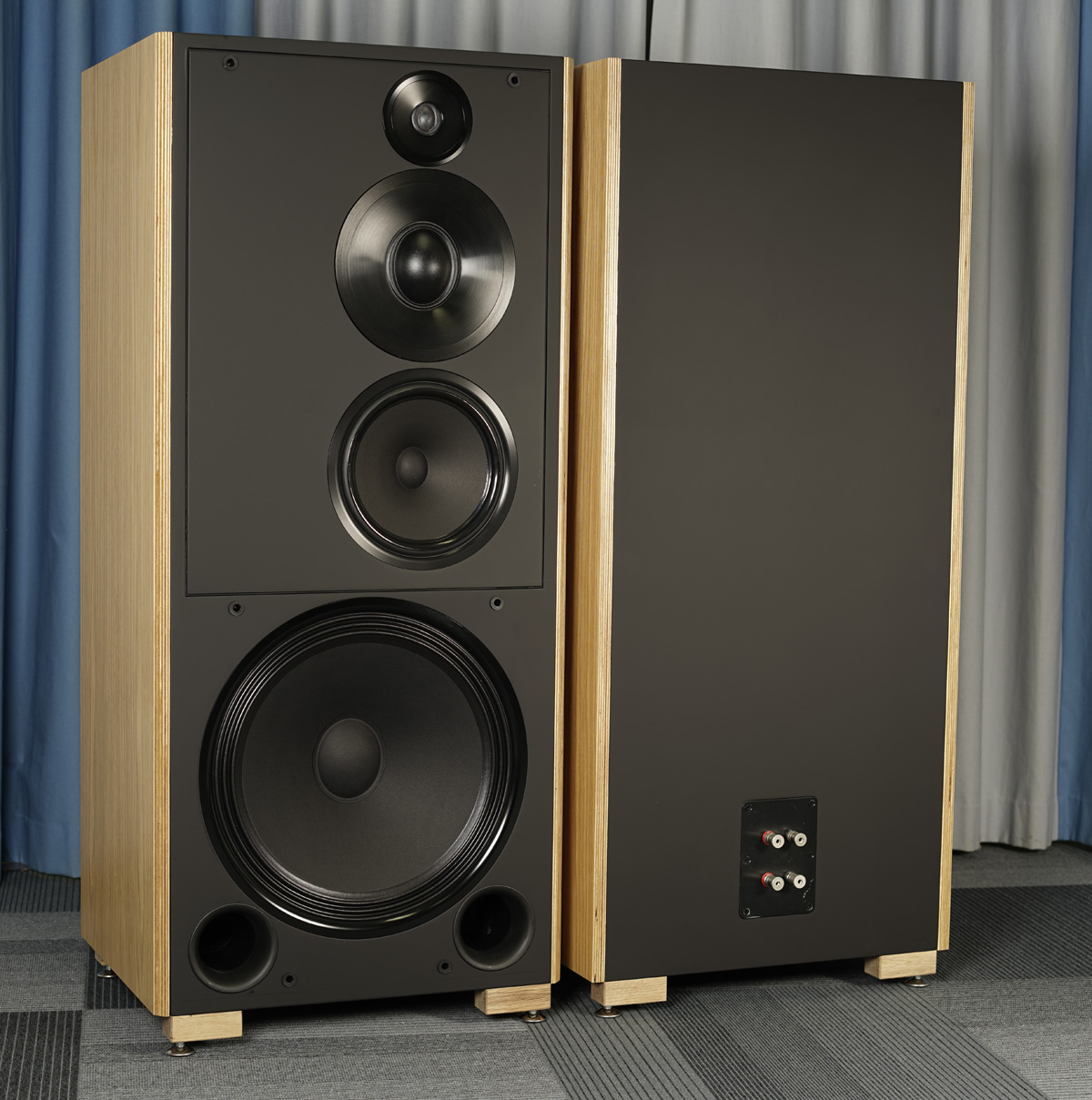
Go to site with gallery of the speakers made for ScanSpeak
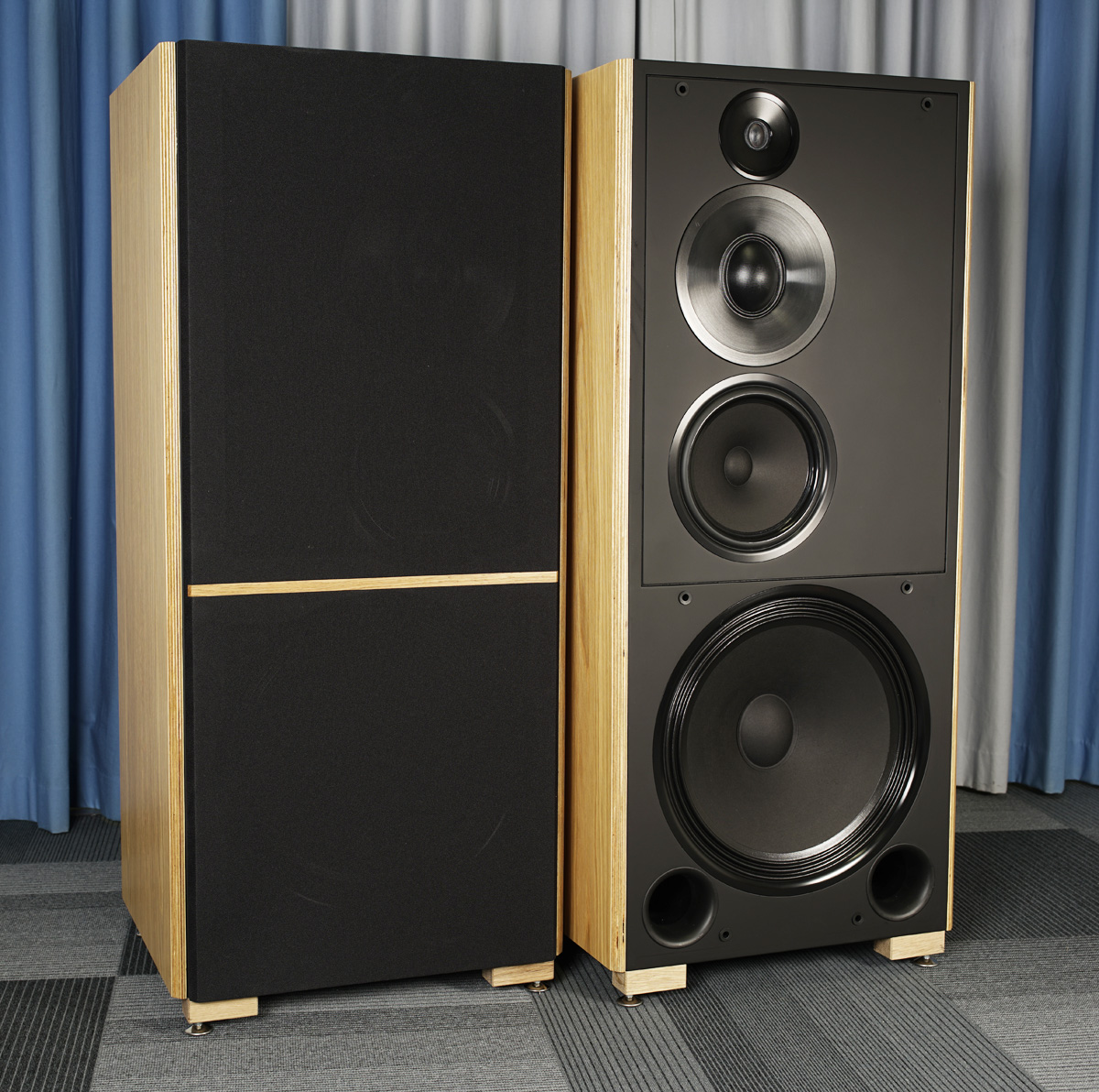
Finishing the
Ellipticor-A50, I had a version planned for myself, a
smaller pyramid version, better suited in size for our living
room - and with a smaller 28W woofer. So, a mockup was made and from
measurements and simulations it soon
became very clear it just didn't work. The D8404 on a narrow baffle had
some + 4 dB @ 1 kHz and there was no way I was going to spoil the
simplicity of the A50 crossover by equalising in this area, in particular
for this key driver covering some four octaves.
What I had planned - and did work - was having the bass driver driven
from a Hypex FA251 plate-amp/DSP, thus eliminating the passive bass crossover.
I had this tested with the first A50, but the ScanSpeak people
wanted a fully passive version, which I fully understand having a simple
set-up for shows, etc. I also have to say the passive version plays
wonderful with the Gryphon amps in Videbaek.
For my own version I also wanted an even more classic design, thus 25 mm Baltic birch.
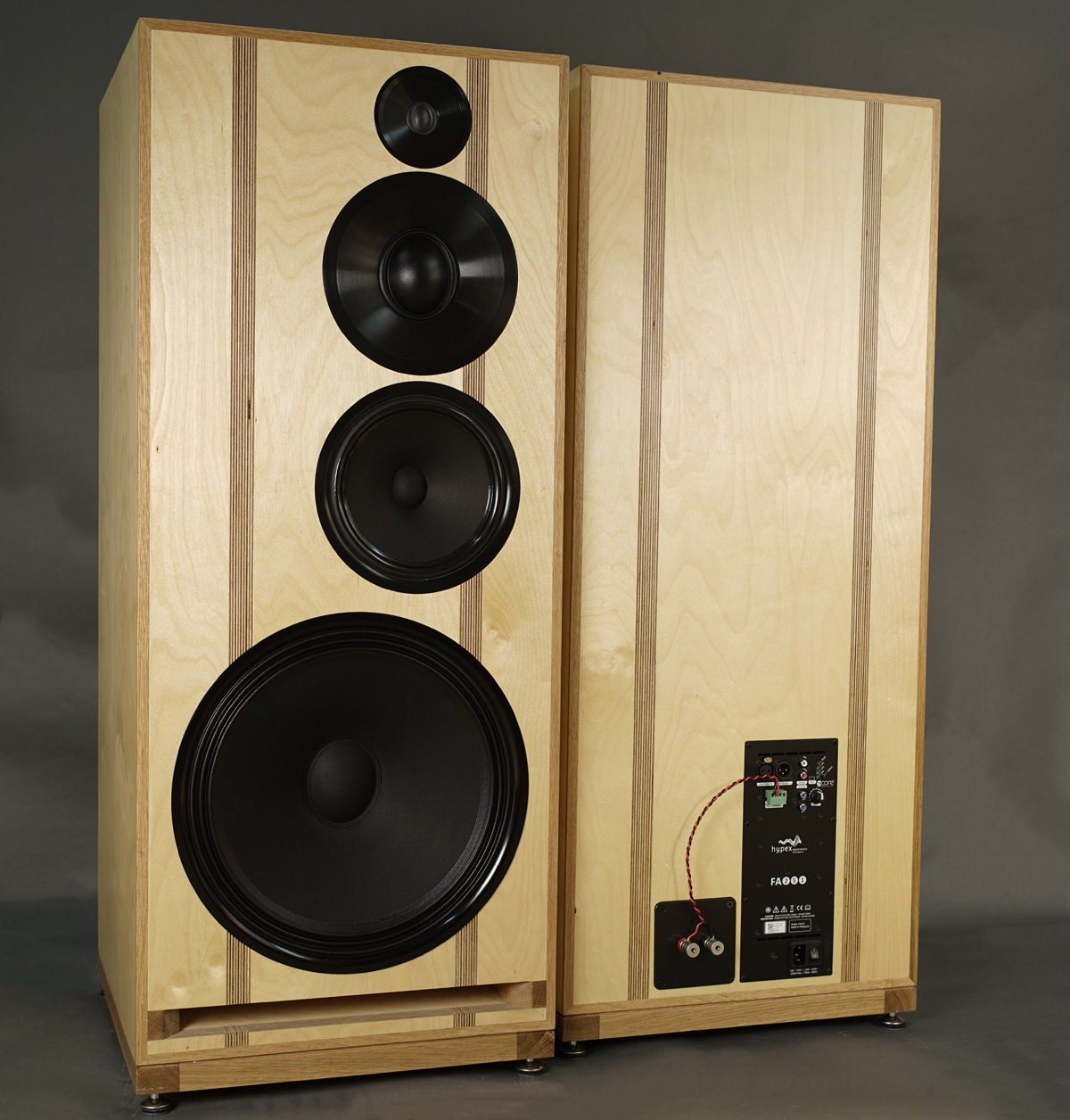
Sound?

Finishing my own Ellipticor-A50s called for some celebration and I
went to our local vinyl pusher and picked up these records. Not all
stellar recordings but featuring artists I have enjoyed for decades. I
addition to these records I obviously went through my current selection
of records I use for testing loudspeakers. See some of the latest
speaker constructions. For some reason I also picked up an old and worn
copy of Double Fantasy/John Lennon-Yoko Ono. I mostly know this album
from CD and hadn't heard it for many years. I don't think I had ever
really
heard this album before this speaker. Even Yoko's high pitched
voice came through tolerable which is - again - a credit to the D84
dome.
Basics:
4-driver speaker, 3½-way
configuration.
Dimensions: 45 x 45 x 105 cm, WxDxH. H + base panel and feet.
System sensitivity: 91-92 dB/2.8V/1 meter.
Impedance: 4-8 Ohms for MMT section.
Point of crossover: 80, 340 and 4000 Hz.
Power requirement: 20+ watts/channel.
Useful links (Please
follow all links before e-mailing!):
http://www.troelsgravesen.dk/tips.htm
http://www.troelsgravesen.dk/tips.htm#CONSTRUCTION_OF_CROSSOVERS
http://www.troelsgravesen.dk/crossovers.htm
http://www.troelsgravesen.dk/LCR-RC.htm
http://www.troelsgravesen.dk/Inverted-Polarity.htm
http://www.troelsgravesen.dk/choices.htm
http://www.troelsgravesen.dk/power-handling.htm
DRIVERS
BACK TO INDEX
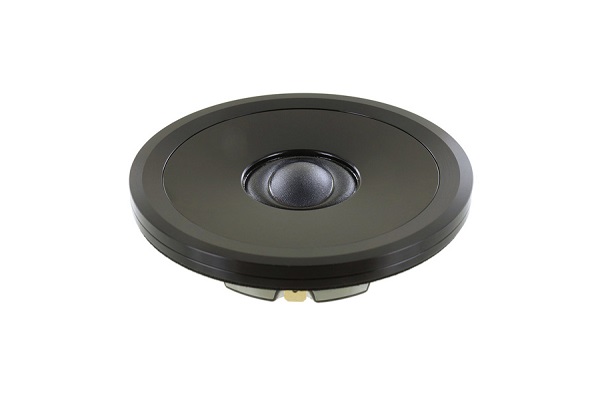
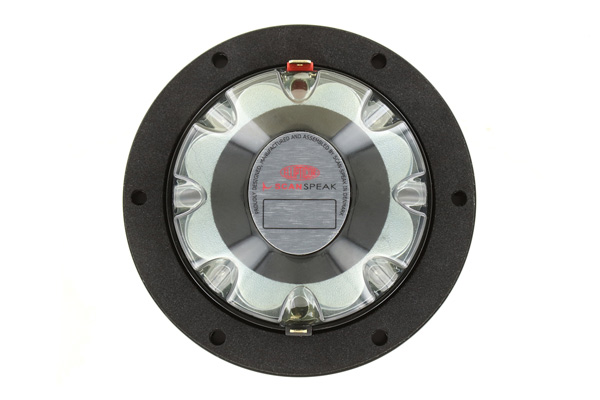
D2404/552000.
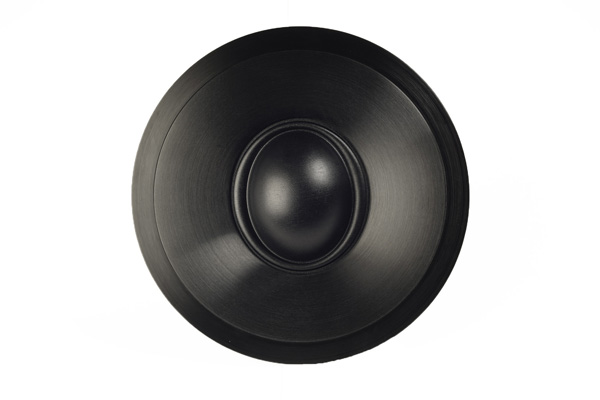
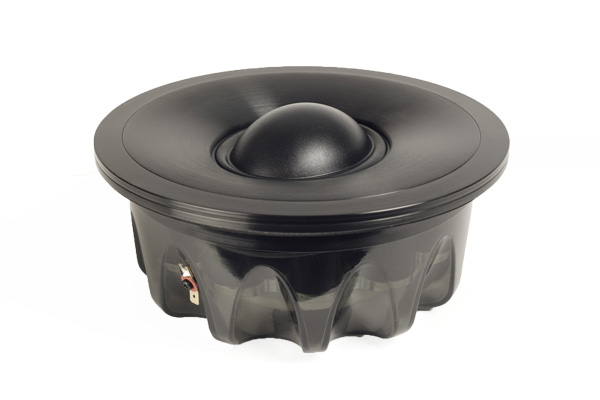
D8404/552000
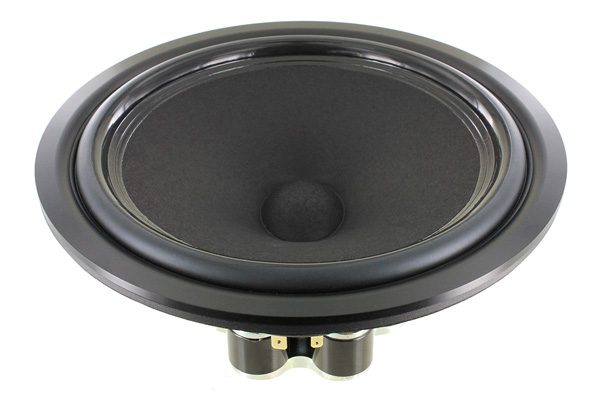
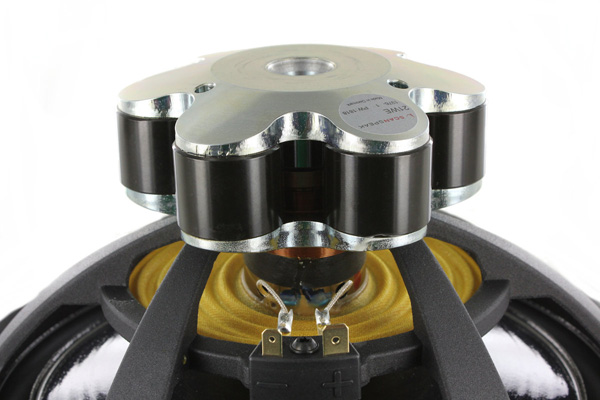
21WE/8542T00
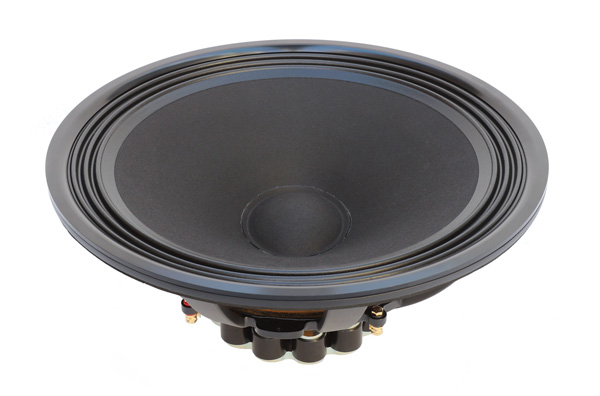
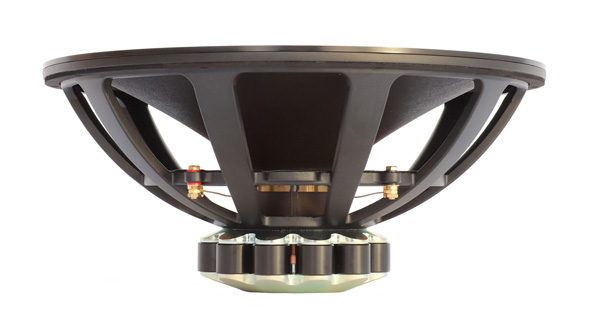
38WE/8582T00
Click images to view large
Download driver specs:
D2404/552000
D8404/552000
21WE/8542-T00
38WE/8582T00
The Hypex modules
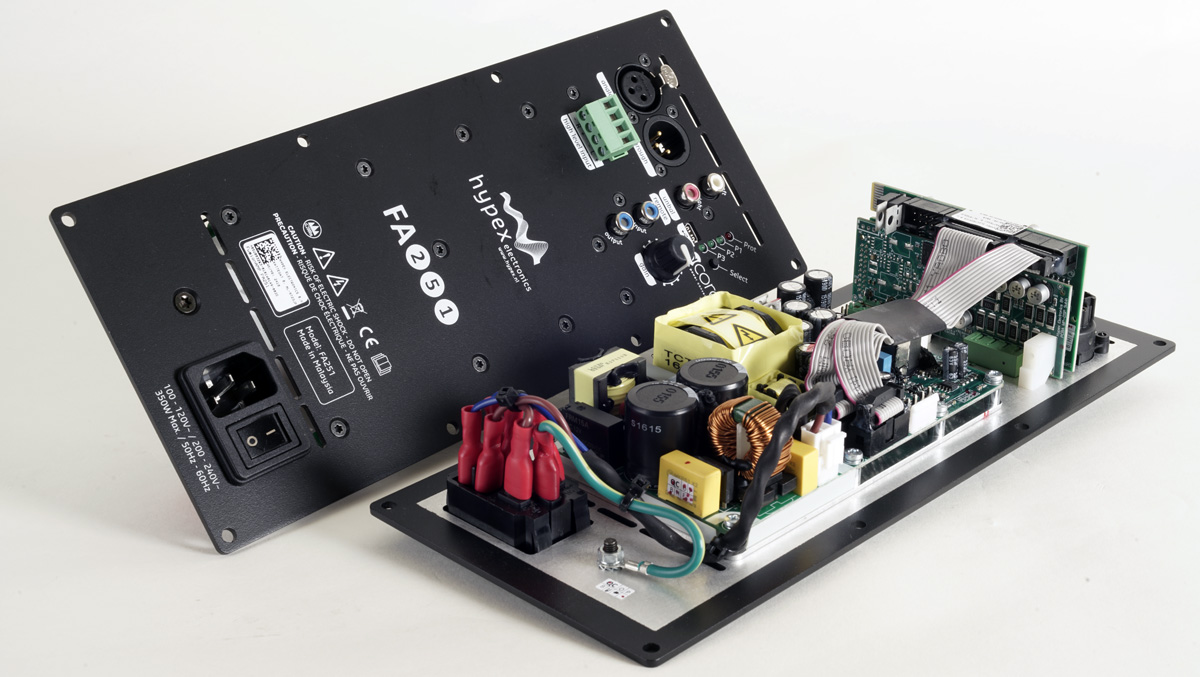
The Hypex FUSION FA251 module.
If you can't live with the FA251, ask for FA501. The FA251 is more
than enough for driving the 38WE bass.
The Hypex version allows bass lift of 4-5 dB @ 40 Hz for preset 2 and 3.
Preset 1 is flat.
In general the Hypex version allows infinite room adaption.
Also incorporated in file is a high-pass filter @ 20 Hz for vinyl
aficionados.
Go to Hypex page
here.
Download software
here (zip file)
CROSSOVER
BACK TO INDEX
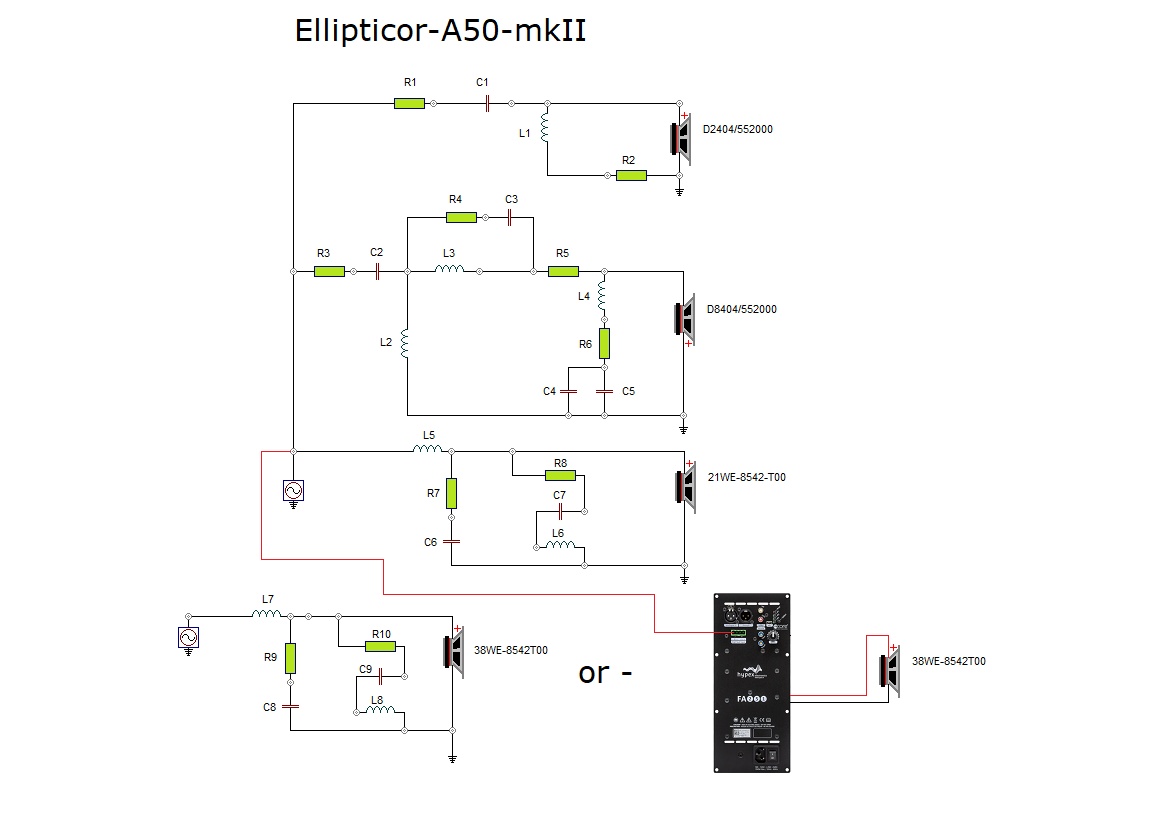
Like the ATELL-3 and Ellipticor-3, there is no high-pass filter to the
21WE midrange cone driver. This driver can handle a lot of power
and with its relatively small closed cabinet, it has a natural 1st order
roll-off below 80 Hz, where the 38WE takes over through the passive
crossover or powered by the Hypex module.
CABINET
BACK TO INDEX
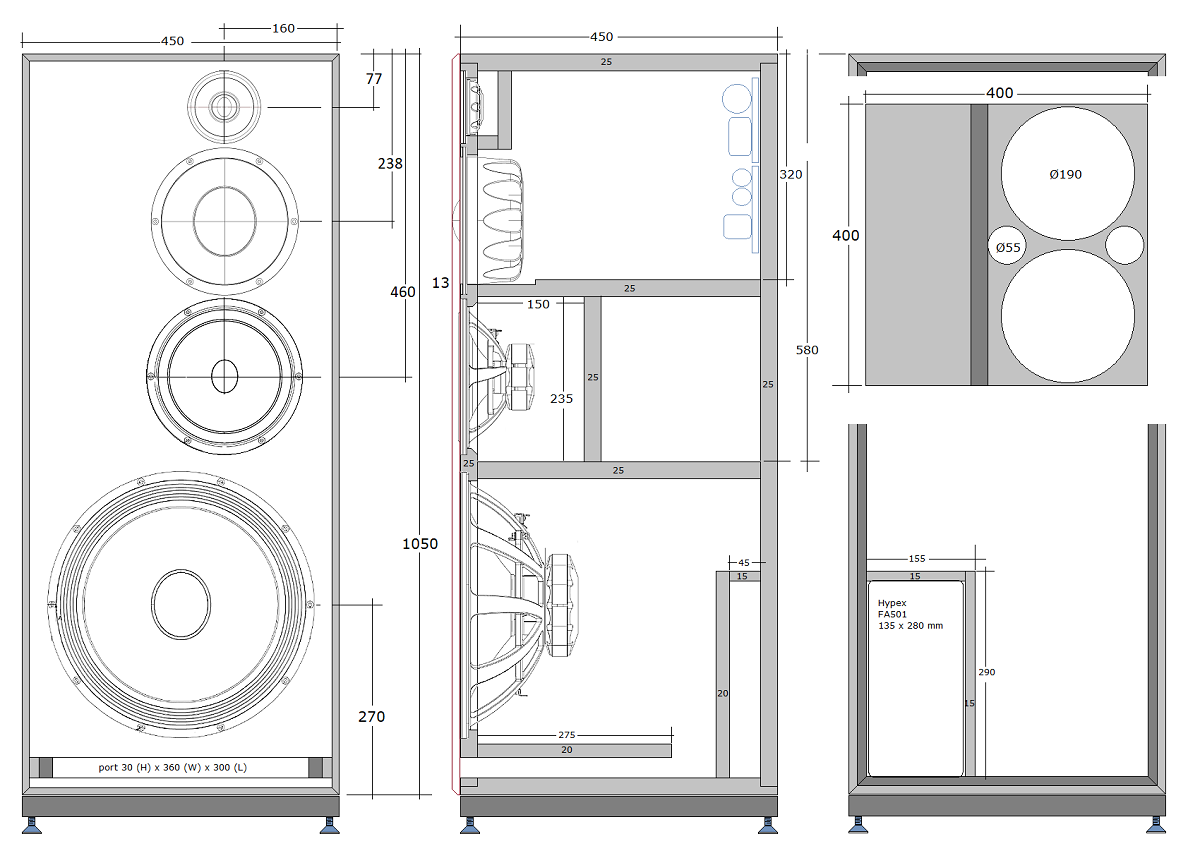
Click image to view large.
Cabinets were made from 15, 20 and 25 mm Baltic birch.
Use 12-15 mm for the Hypex box. I used 12 mm.
Ready made/flat-pack cabinets now available from EBEL
Holztechnik, Germany:
https://www.ebelholztechnik.de/galerien/index.php/category/411-ellipticor_a50_mk_ll
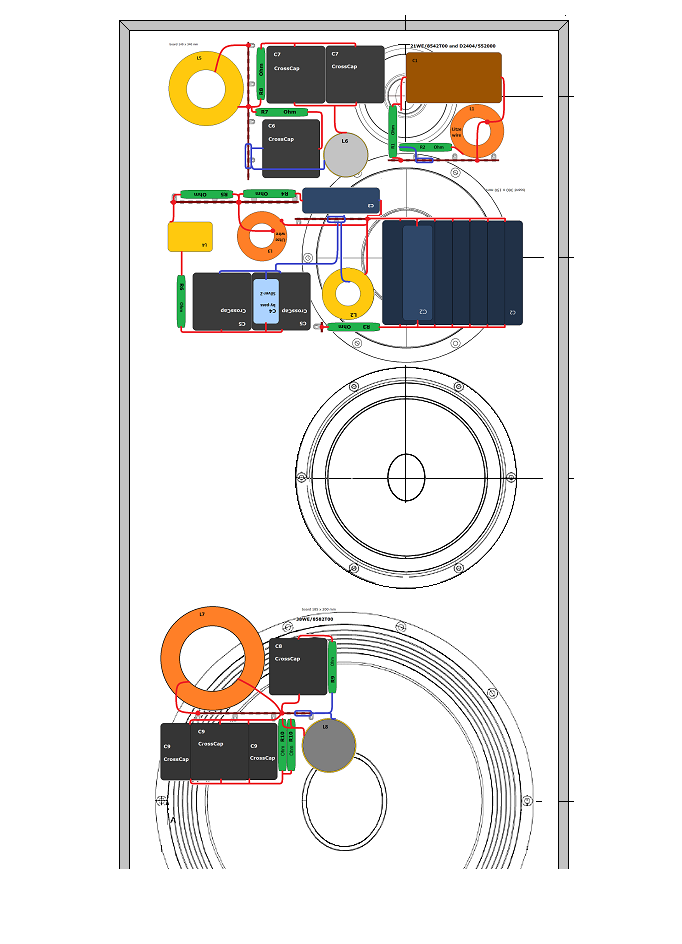
Placement of crossovers on rear panel. Mount though D8404
and 38WE holes.
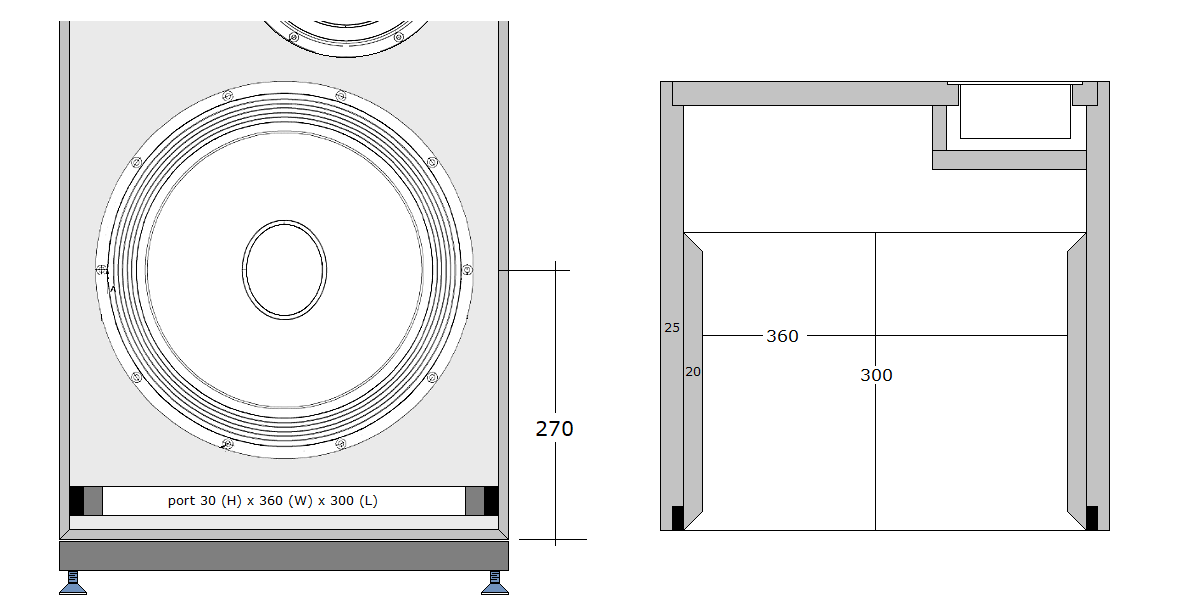
Port. See images below in workshop pics.
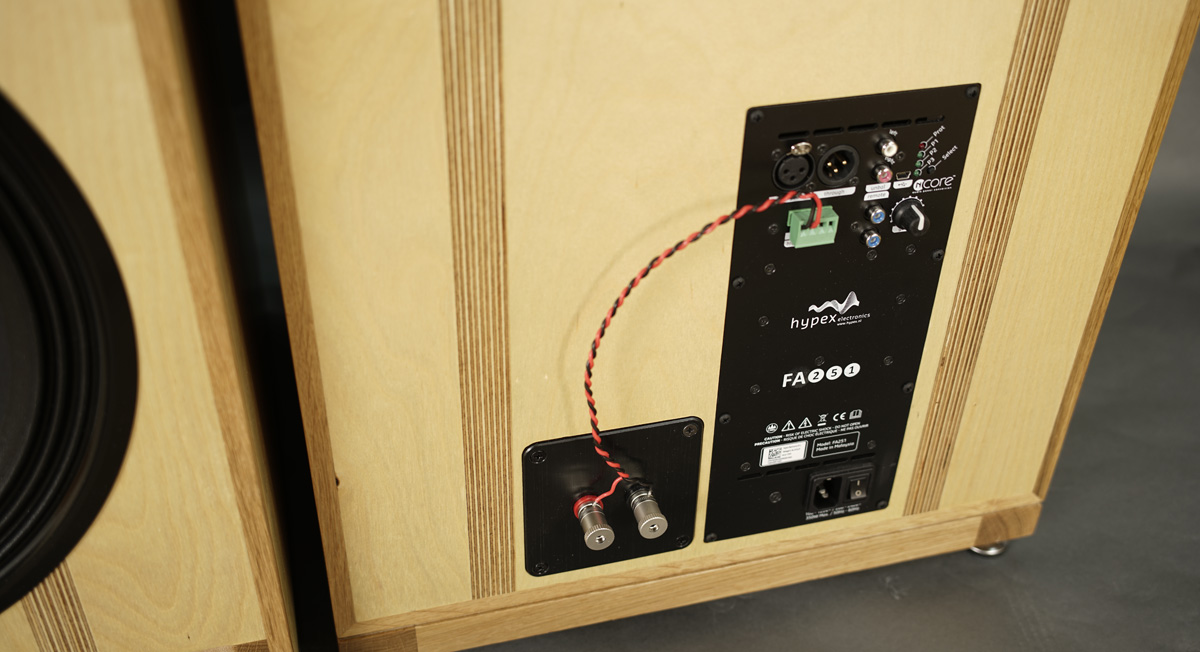
Workshop images
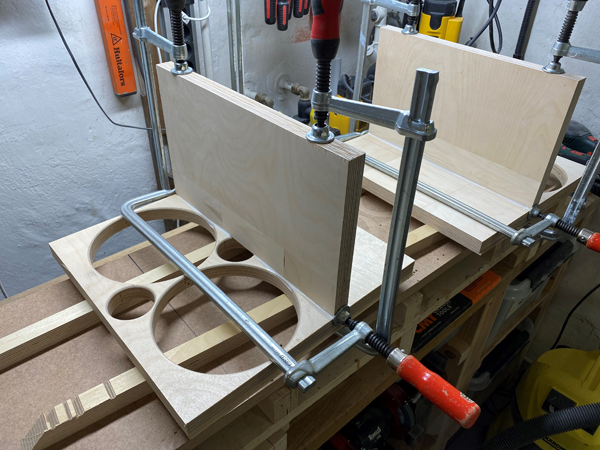
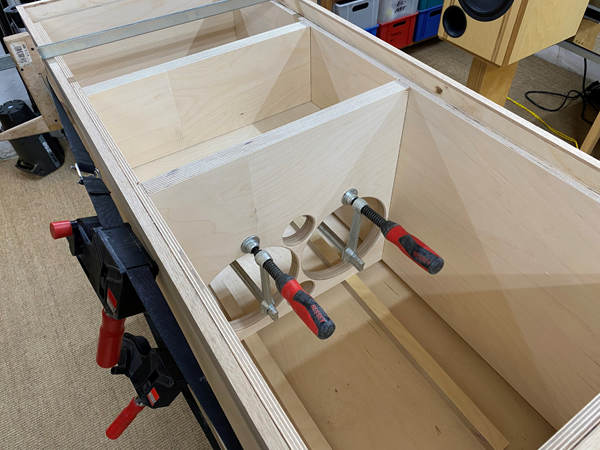
I started making the midrange cabinet/braces. Rear panel of midrange
cabinet glued in place while placed in cabinet to make a sure fit.
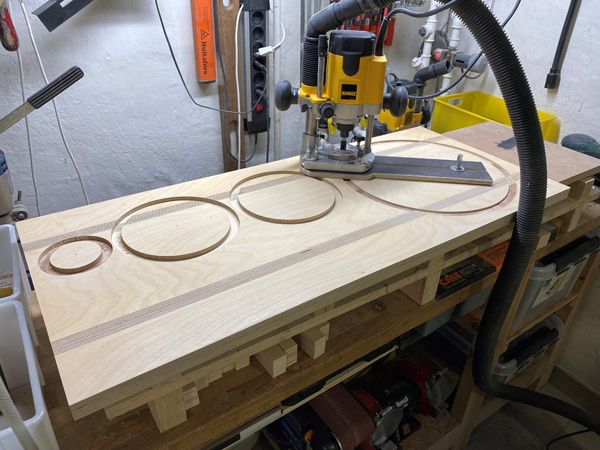
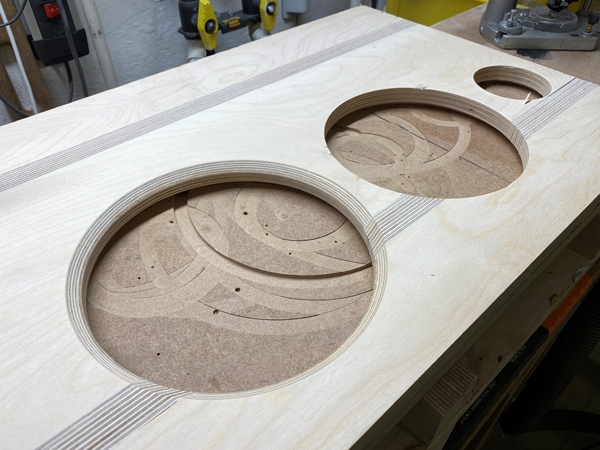
Routing for drivers. Chamfer 21WE hole slightly.
Sometimes I have glued the whole thing in one operation, but a cabinet
large as this is enormously stressful as we only have less than 15
minutes to get it all inplace. This time I started gluing the left side
panel and rear panel, making absolutely sure it is 90 deg. Next I glued
the braces/midrange cabinet in place. After this the top panel followed
by the bottom panel. At this stage I glued the port panels/fillets in
place, only leaving the right side panel and front panel to be glued in
one operation.
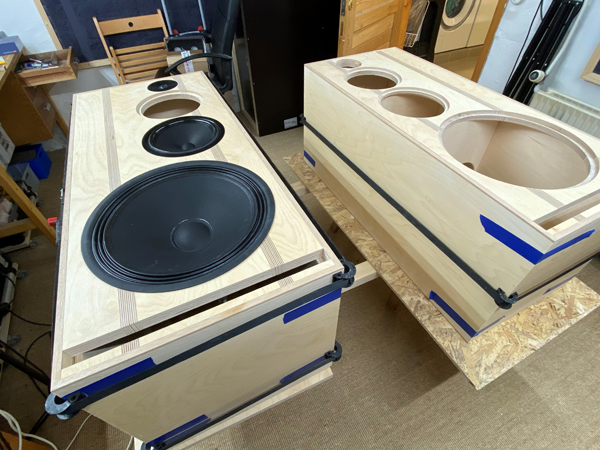
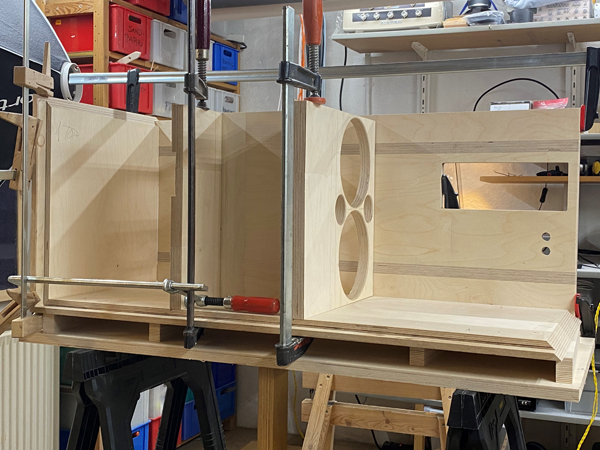
Testing drivers on front panel. Right: Gluing upper panel.
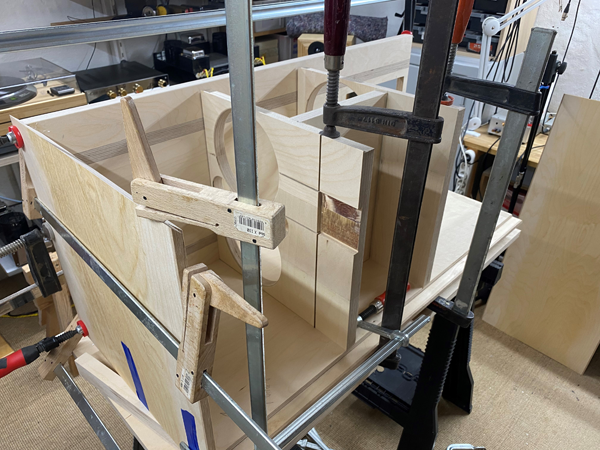
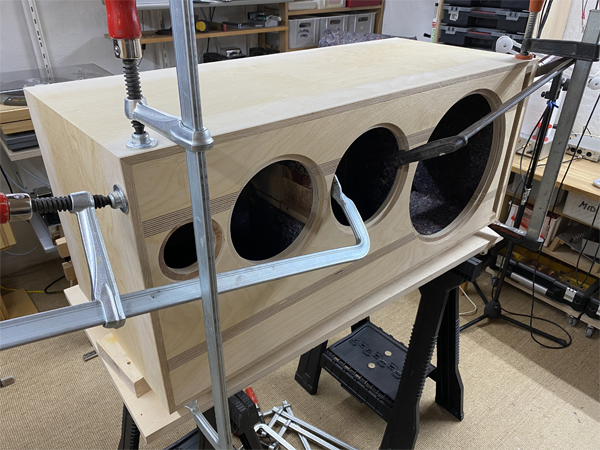
Sometimes a
rectangular box like this may be slightly skewed when you have glued
rear, braces top and bottom panel and you need to pull the whole
structure to make the front panel fit exactly. Fortunately we have
driver holes to add pressure.
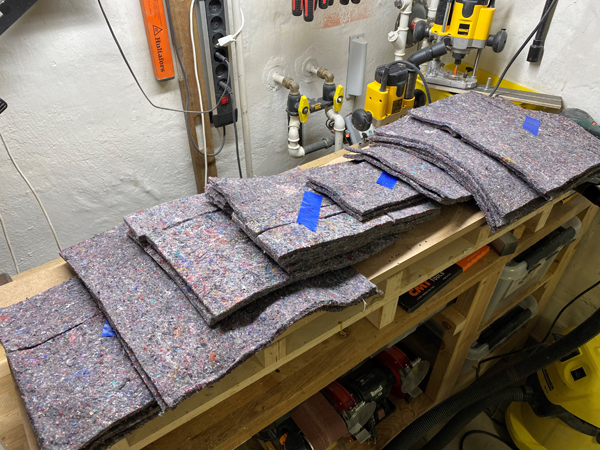
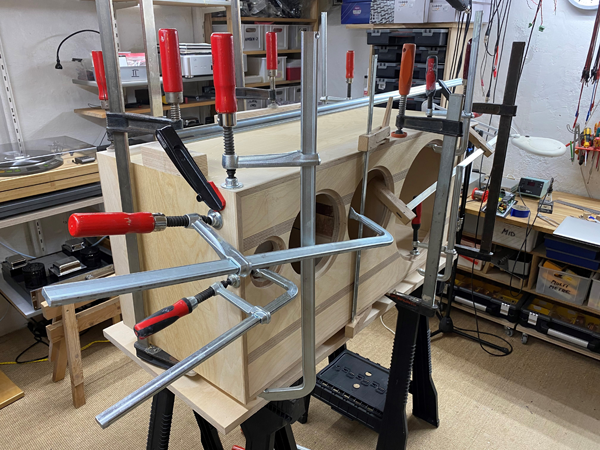
Making all the felt sheets needed. Gluing the right side panel and front
panel in one operation.

View video of felt damping.
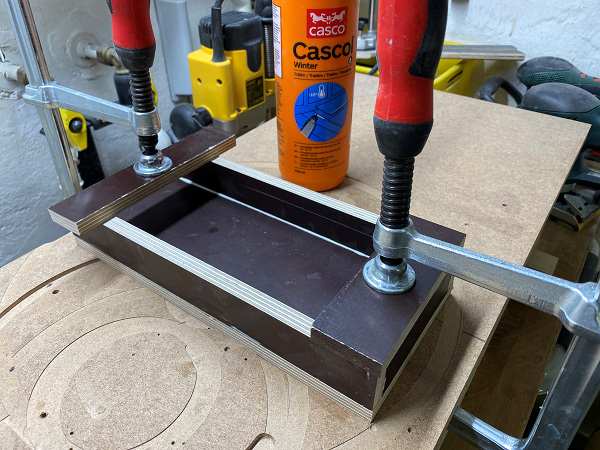
Making the Hypex enclosure from 12 mm plywood.
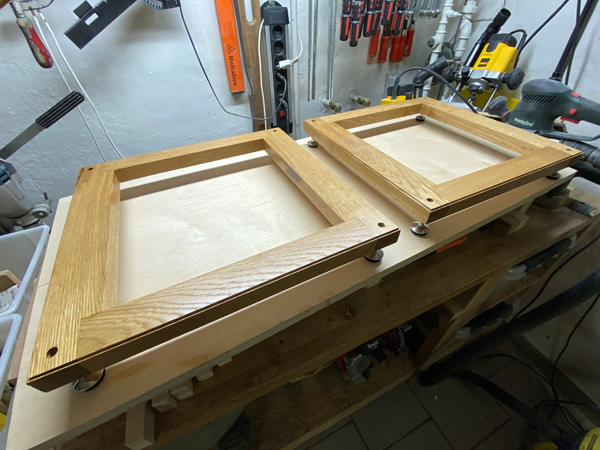
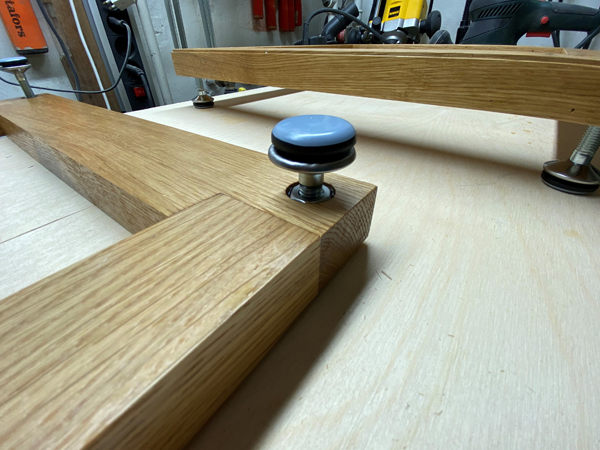
Two frames of 450 x 450 mm were made from 30 mm solid oak.
Adjustable feet, read
here.
Further damping:
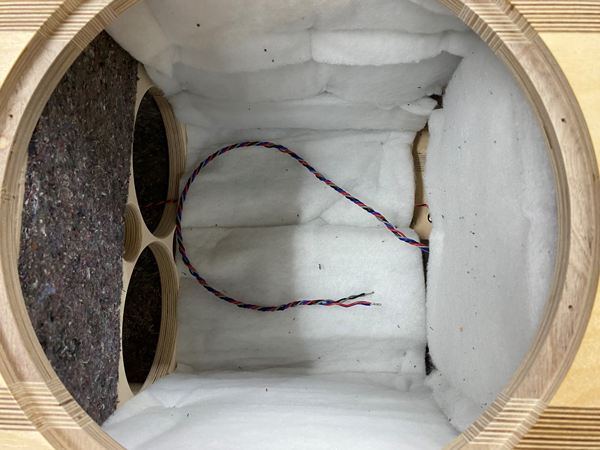
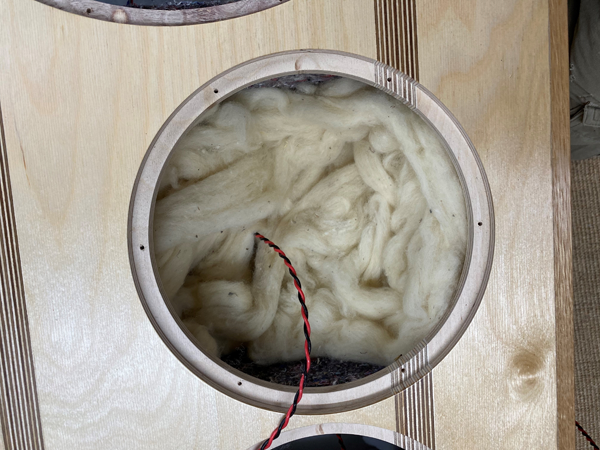
Left: Bass section, add acoustilux. Fasten with staples or dots of glue.
Right: Fill midrange (21WE) cabinet with 200 grams of sheeps wool.
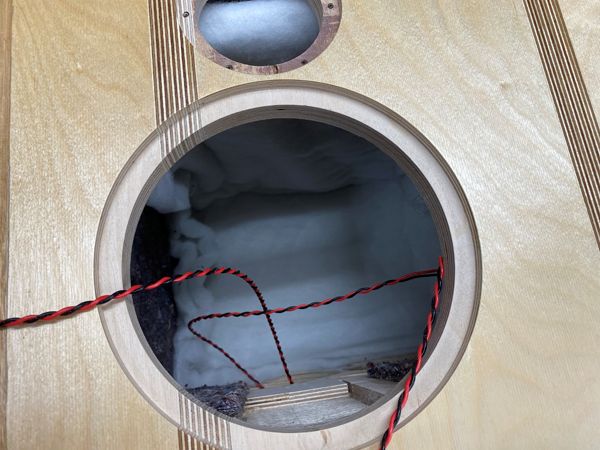
Top cabinet: Fold a piece of 150 x 50 cm acoustilux and cover rear panel
(over the crossover) and on top of cabinet.
Not shown: Add a piece of acoustilux on rear panel behind midrange (21WE)
cabinet.

Workshop test during crossover development.
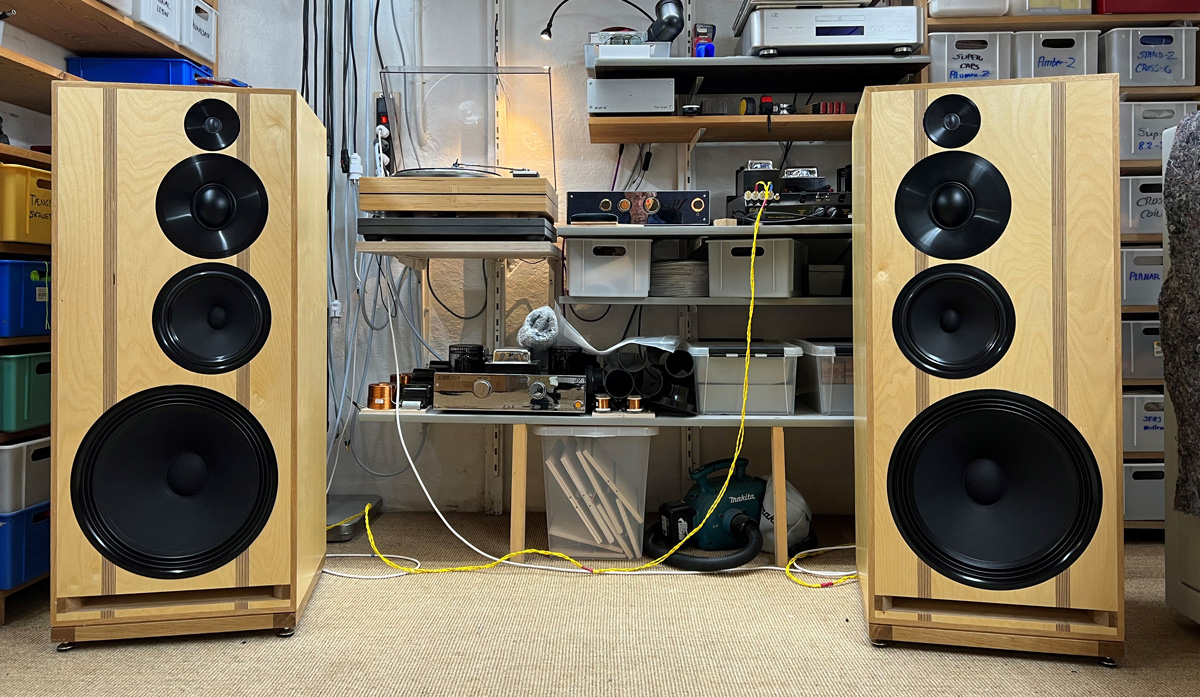
Here the final speakers.
Some thoughts on mounting Ellipticor mid-dome and tweeters:


Using countersunk screws will eventually skew
the drivers a tiny bit and if you have to press the decor ring into
place - you are never going to get it up again!
So, add some foil around the driver when fastening the screws. This way
you will leave some 0.1-0.2 mm space between decor ring and cabinet.
Removing the decor ring by rotating until it slips the magnets and lift
with another small neo magnet. The tweeter decor ring pops up by itself.
The D84 doesn't.
When routing for the D24 and D84, make the rebate diameter +0.5 mm.
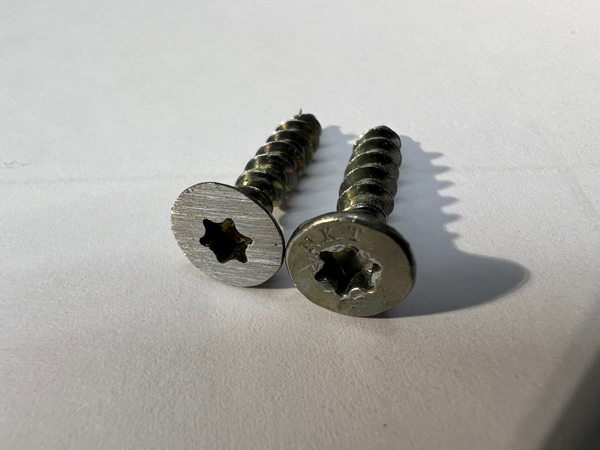
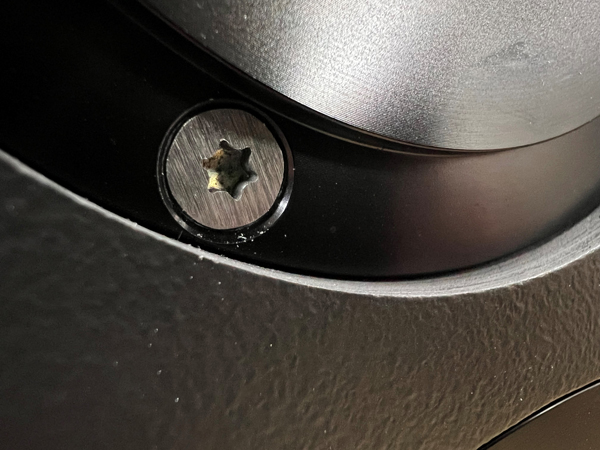
The screws for the tweeter need to be well
countersunk. I found some good torx 20, 4 x 20 mm screws at the local
Bauhaus and for the tweeter I did some grinding to reduce the head size
and to make sure the decor ring doesn't ride the edge of any screws and
cause buzzing. This is important.


Left: Decor rings in place.
Right: BTW: The D84 is a nice driver for gently soldering the wires to
the terminals as the shape of the rear chamber lets it rest nicely in
the driver hole. Nice feature - because the D84 is seriously heavy!
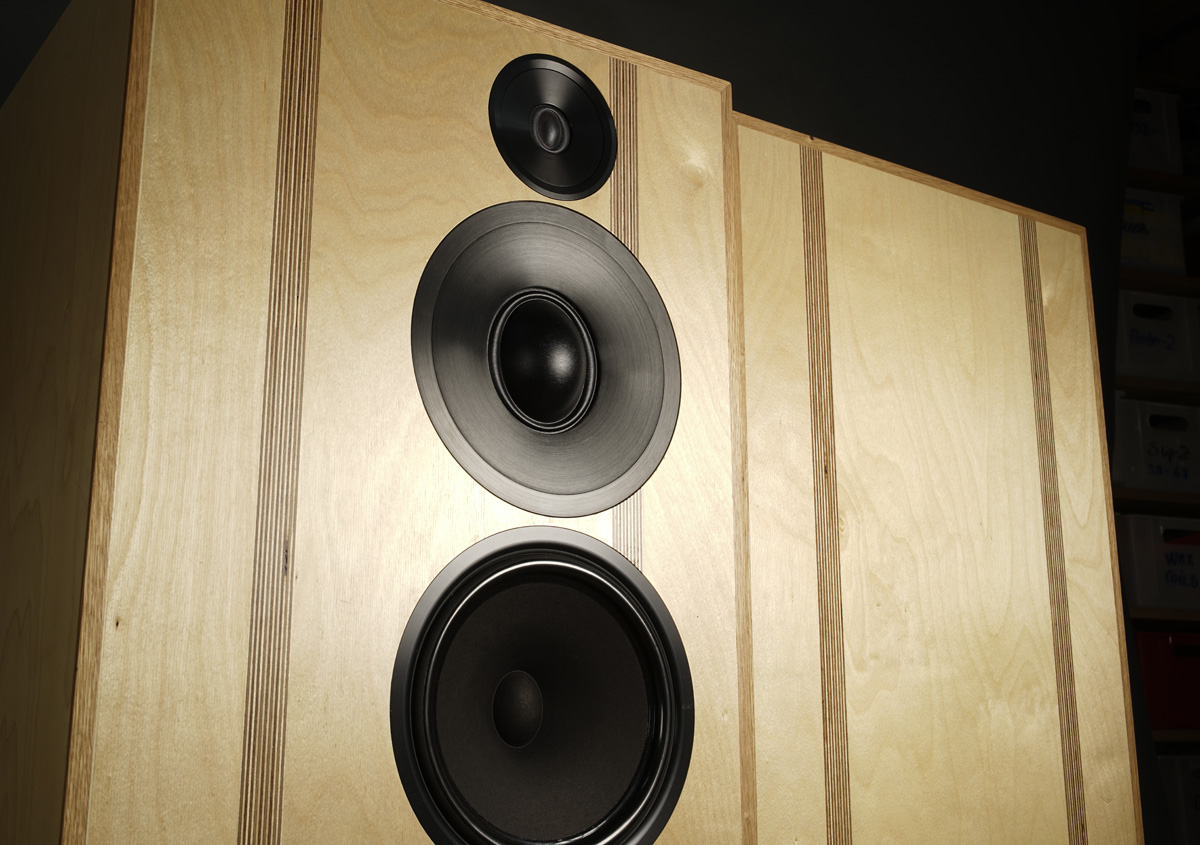
MEASUREMENTS
A few comments on
MEASUREMENTS before you start interpreting the readings.
First of all, if we think measurements will
tell us how a speaker sounds, we're wrong. The perception of sound is
way too subjective to be reflected in any measurements we can perform. A
loudspeaker system is meant to give us a satisfying idea of an acoustic
event and for some people a pair of 5 USD ear-plugs are enough, others
spend 200 kUSD on a truly full-range pair of speakers - and the latter
may not be happier than the former.
Measurements may give us an idea of tonal
balance of a system, i.e. too much or too little energy in certain
areas, although dispersion characteristics play a vital role here. A
two-way 7+1 and a three-way 7+4+1 may display similar horizontal
dispersion, yet sound very different. Measurements may tell us about
bass extension if far-field measurements are merged with near-field
measurements. In addition to this, ports may contribute to bass
extension. Most of we diy'ers do not have access to an anechoic room for
full-range measurements from 20-20000 Hz.
What cannot be seen is what kind of bass
performance we get in a given room. Bass performance is highly dependent
on in-room placement of your speaker and the same speaker can be boomy
in one place and lean in another. Actual SPL level at 1 meter distance
and 2.8V input is useful for en estimate of system sensitivity and
combined with the impedance profile may give an idea of how powerful an
amplifier is needed to drive the speaker to adequate levels.
What measurements do not tell is the very
sound of the speaker unless displaying serious linear distortion. The
level of transparency, the ability to resolve micro-details, the "speed"
of the bass, etc., cannot be derived from these data. Distortion
measurements rarely tell much unless seriously bad, and most modern
drivers display low distortion within their specified operating range.
Many people put way too much into these
graphs and my comments here are only meant as warning against
over-interpretation. There are more to good sound than what can be
extracted from a few graphs. Every graph needs interpretation in terms
of what it means sonically and how it impacts our choice of mating
drivers, cabinet and crossover design.
What measurements certainly do not tell is
the sonic signature of the speaker, because speaker cones made from
polypropylene, aluminum, Kevlar, paper, glass fiber, carbon fiber,
magnesium, ceramics or even diamonds all have their way of adding spices
to the stew. Nor do measurements tell what impact the quality of the
crossover components add to the sound, from state of the art components
to the cheapest of coils and caps, they all measure the same if values
are correct, yet sound very different.
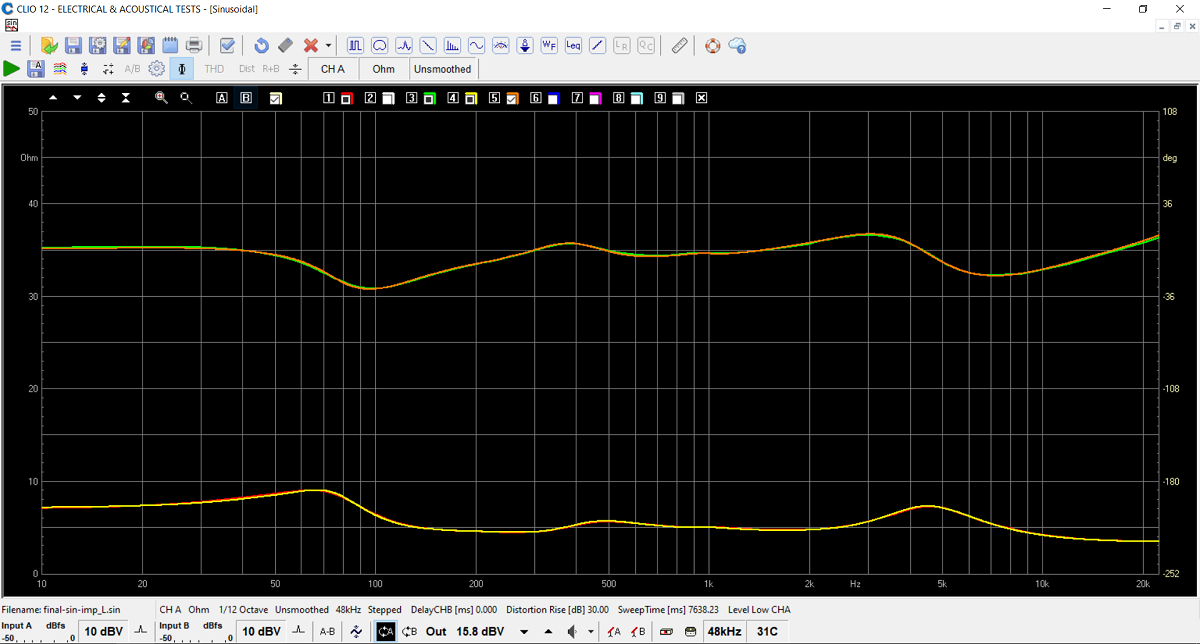
Impedance of 21WE/D84/D24 section (both
speakers). Tube amps just love it!
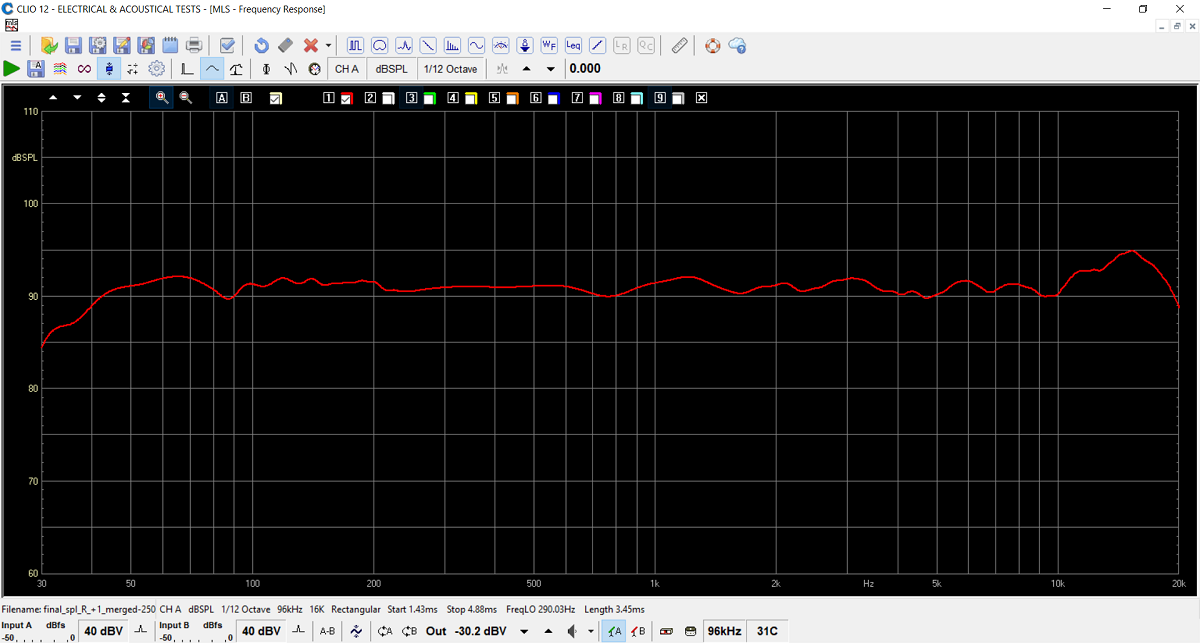
Frequency response merged with nearfield
responses of 21WE and 38WE drivers at 225 and 80 Hz. In this way we can
have a reasonable idea of bass extension. Port is not included here,
which will further extend the lower bass area.
The intrinsic increase in on-axis response the D2404 tweeter in the
10-20 kHz range was left as is. For those who can hear the upper octave,
this may add just a little more airiness to the soundstage.
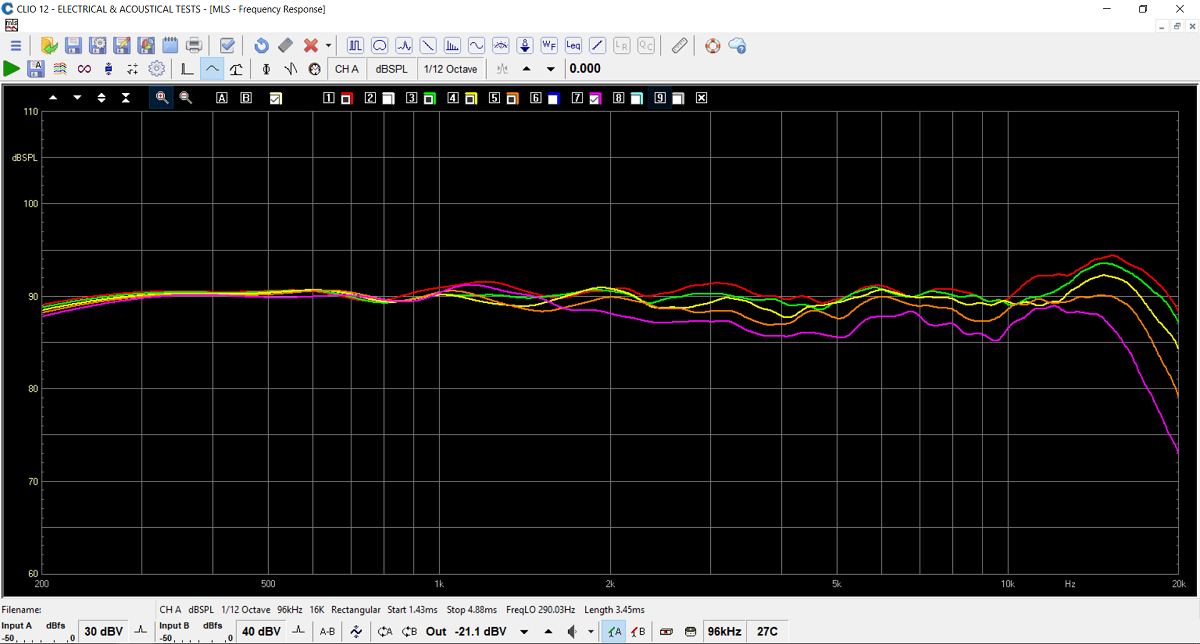
Horizontal dispersion at 0, 10, 20, 30 and 40
deg. off-axis.
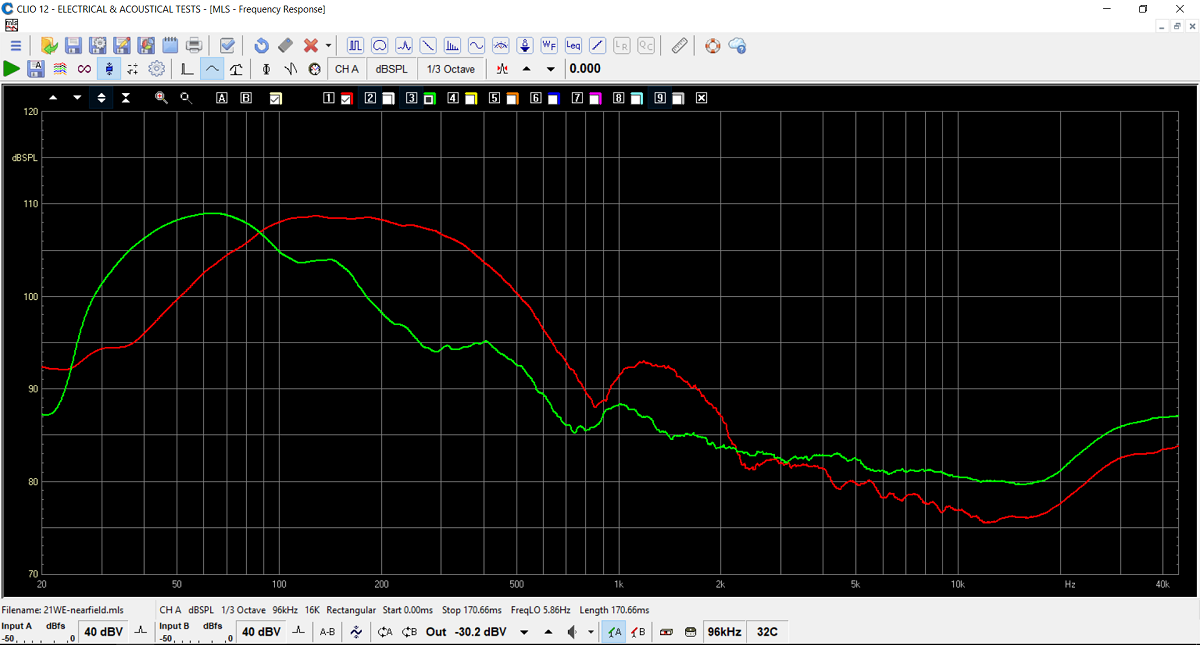
For those interested, near-field response of
21WE and 38WE drivers, driven from crossover and Hypex module.
As predicted the 21WE, not having a high-pass filter, does roll off
smoothly below ~80 Hz due to the small closed cabinet.
SPEAKER-KIT
BACK TO INDEX
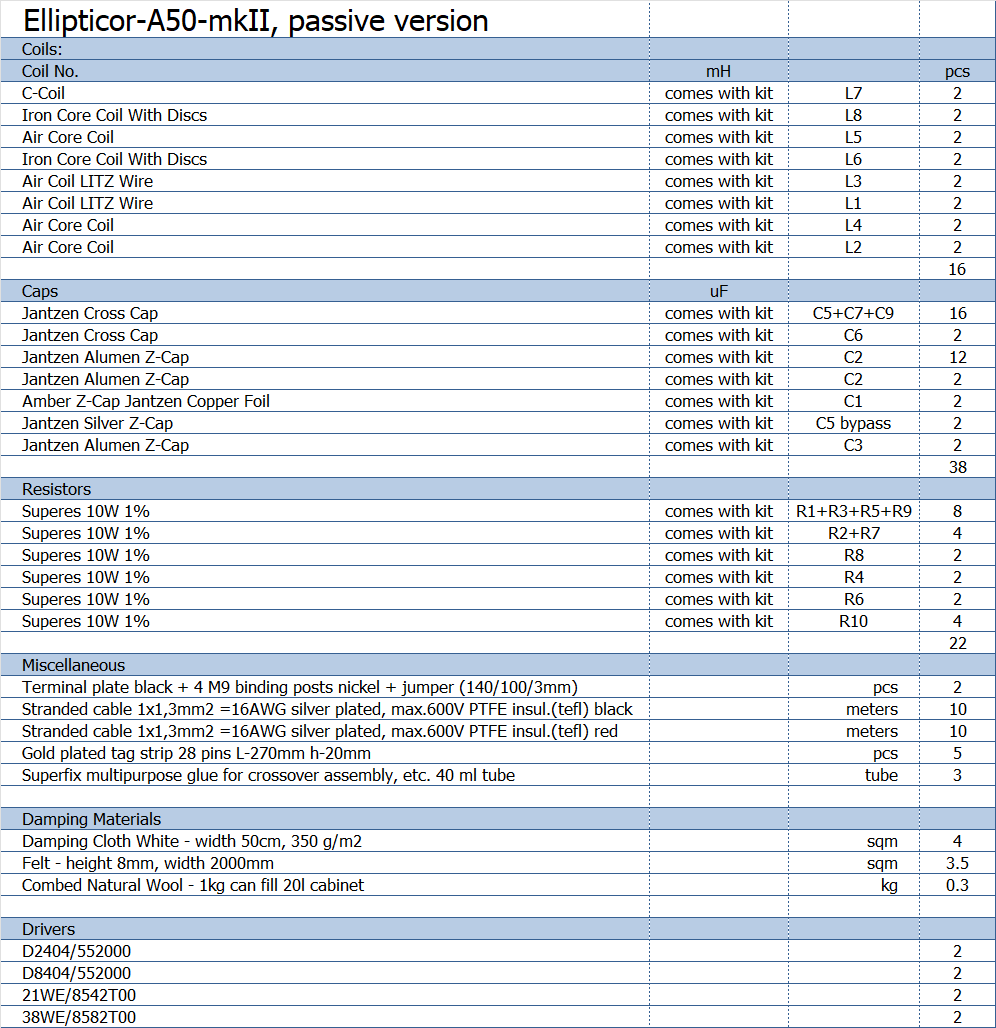
Above the passive parts list.
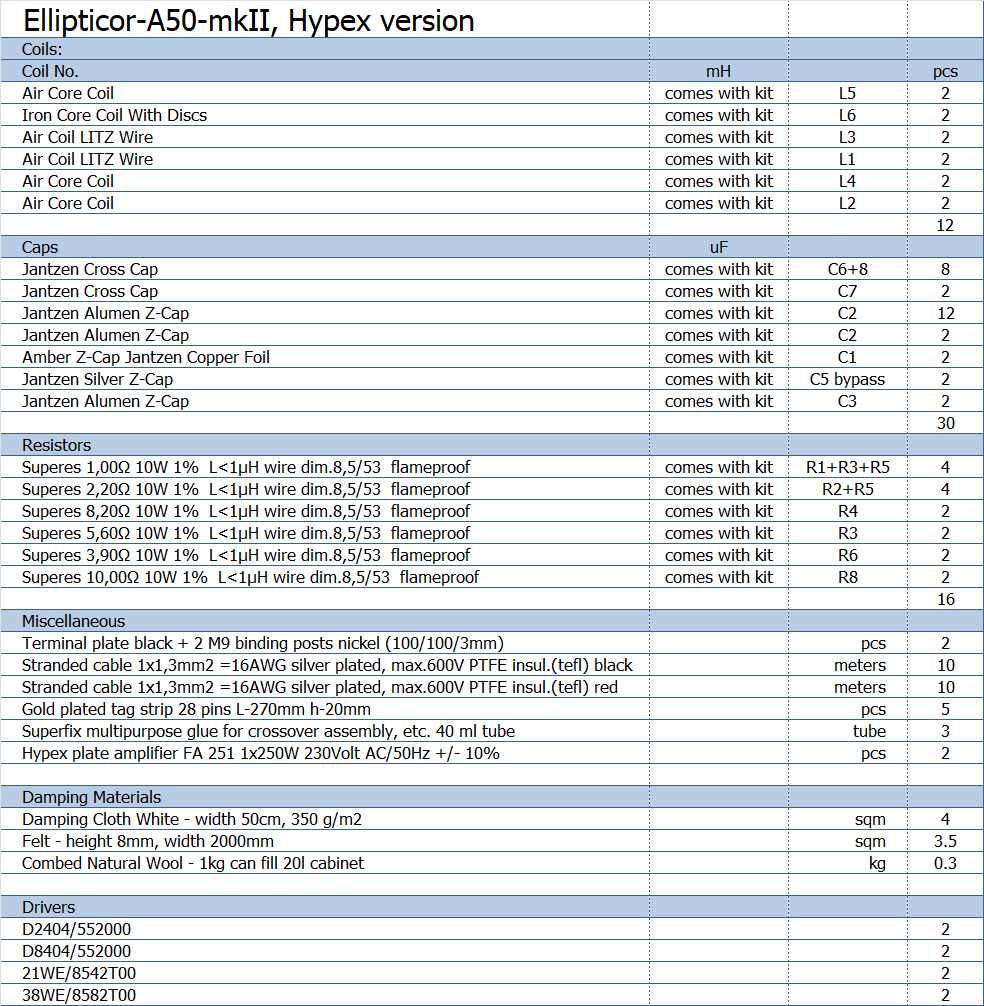
Above the semi-active parts list.
All kit and component prices may be subject to
change and are always to be confirmed by Jantzen Audio Denmark.
Kits can be bought with/without drivers - or some of the drivers.
Download Kit
Sale Presentations for passive version:

Download Kit
Sale Presentations for semi-active version:

All technical questions to
troels.gravesen@hotmail.com
All questions regarding purchase of
kits, please mail Jantzen Audio at
contact@jantzen-audio.com
CROSSOVER-LAYOUT
BACK TO INDEX
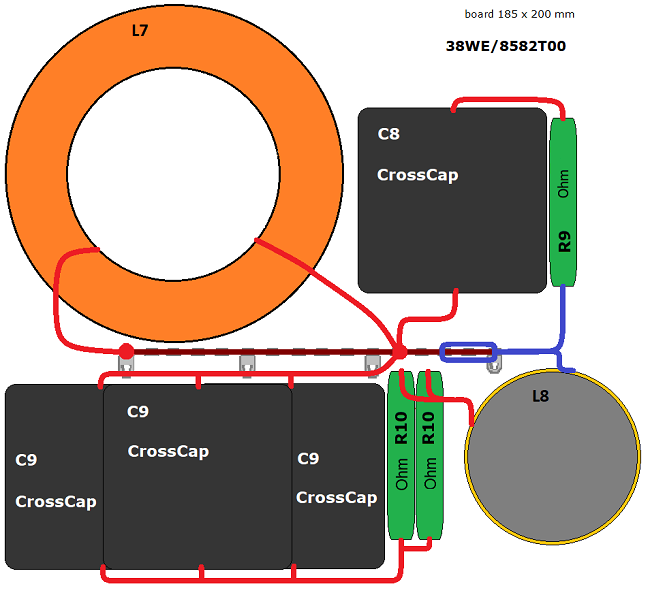
Bass crossver layout for fully passive version.
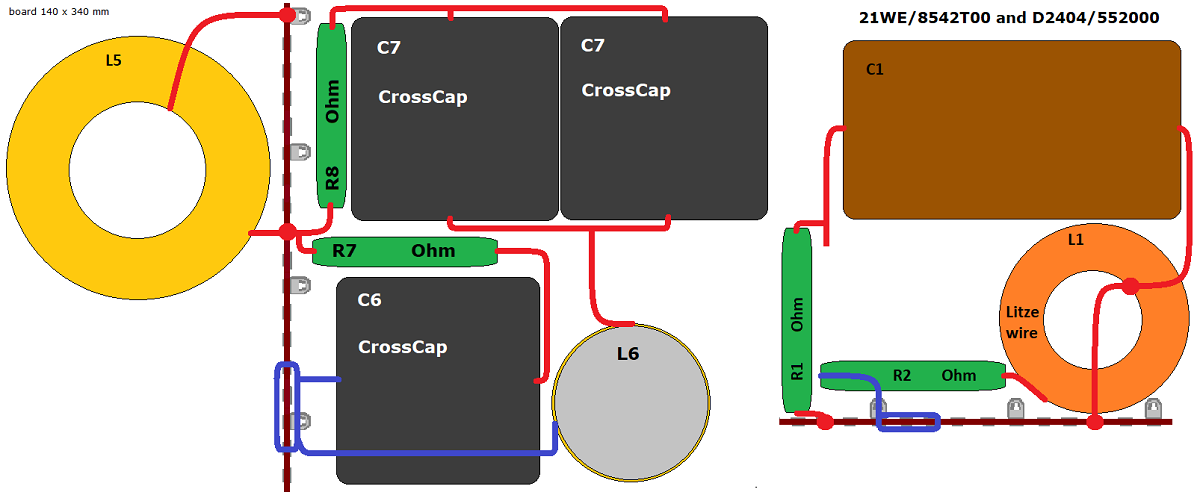
Crossover layout for 21WE and D2404 drivers.
R8 is made from two resistors, stacked.
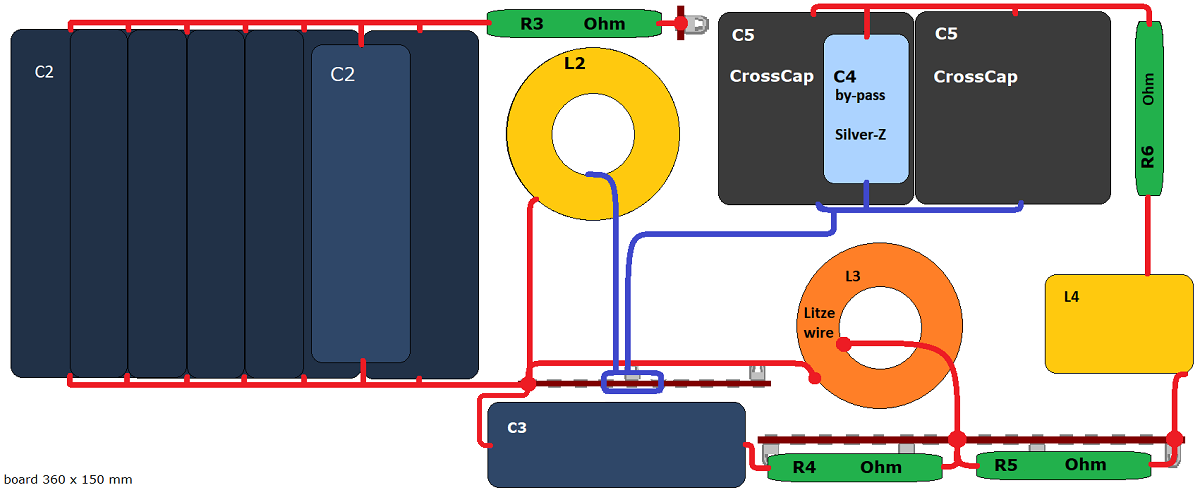
Crossover layout for D8404 driver.
Speaker wiring
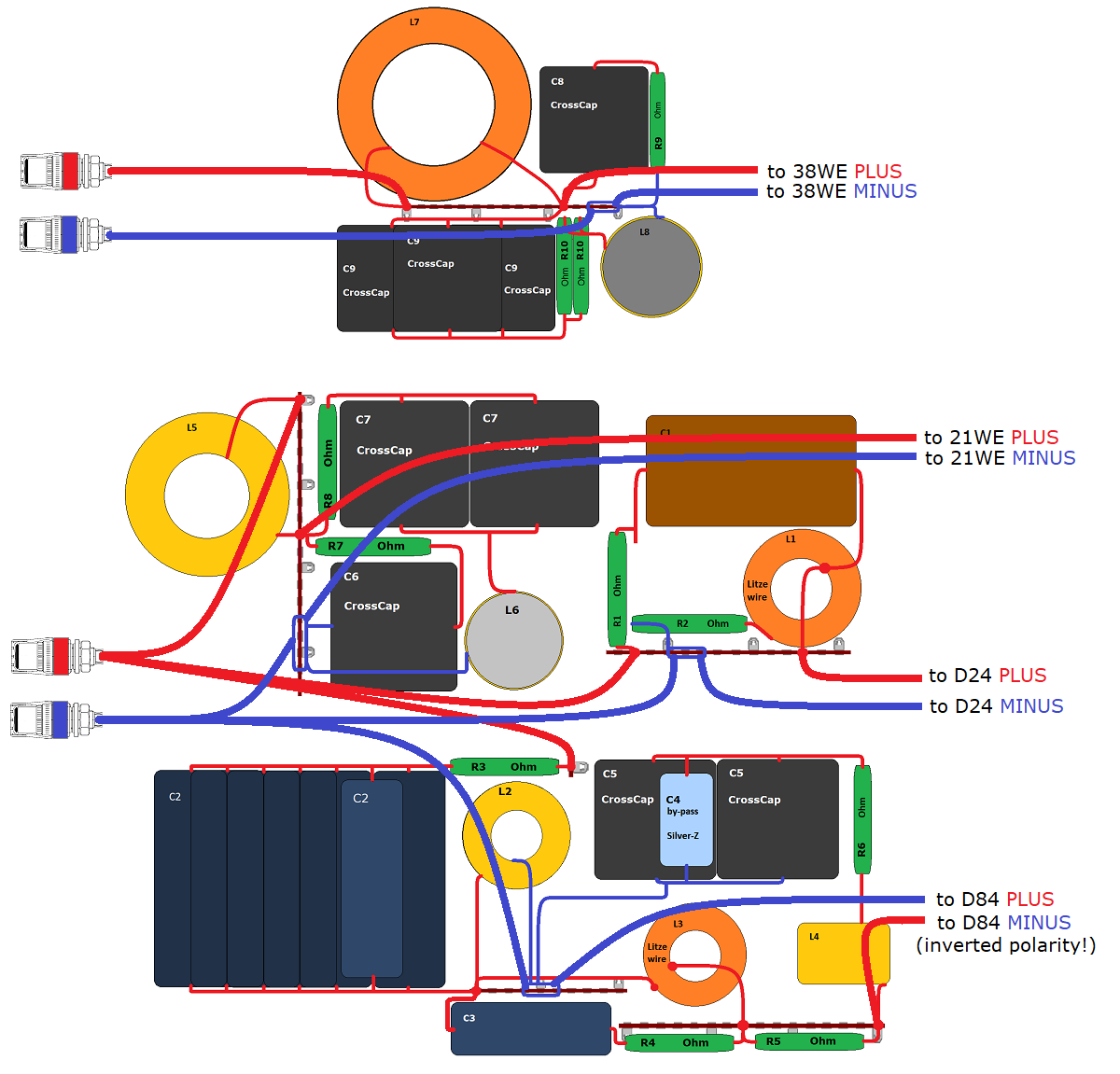
Crossover pics
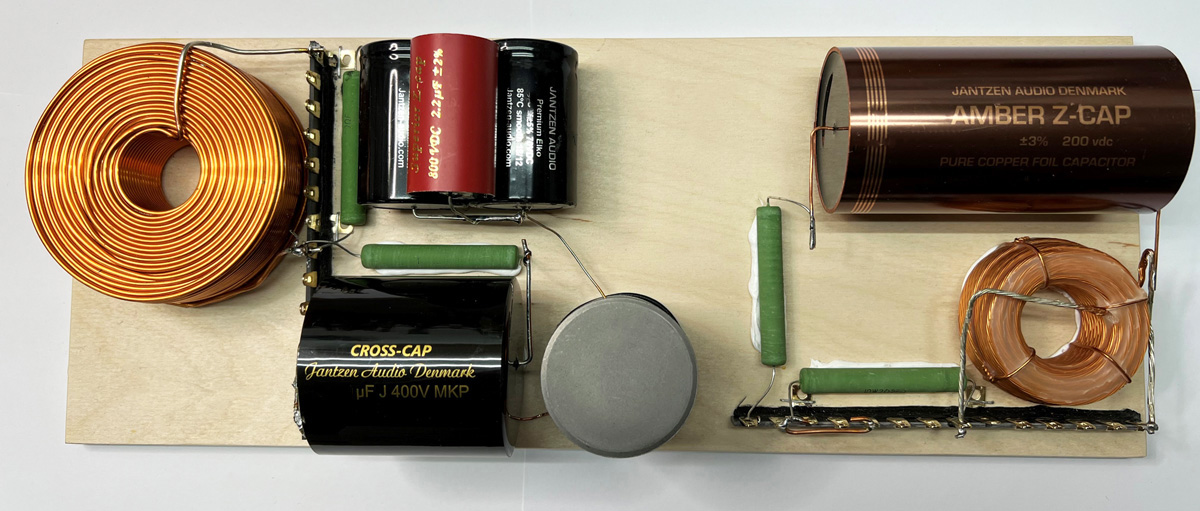
Crossover for 21WE and D24 drivers.
At the time I made the 21WE crossover,
Premium ELKOs were still available (C7). Now replaced by CrossCap.
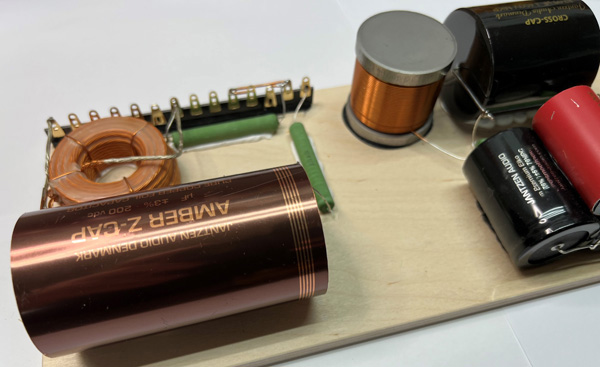
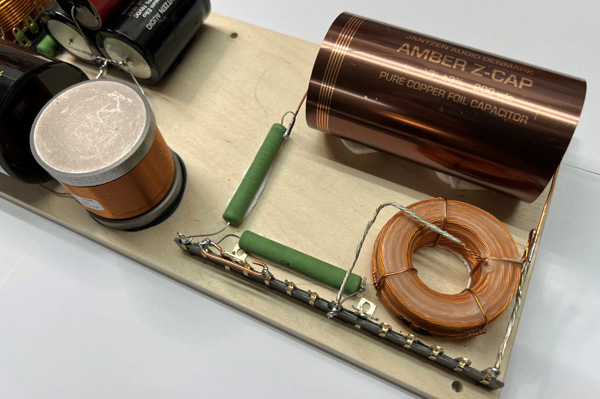
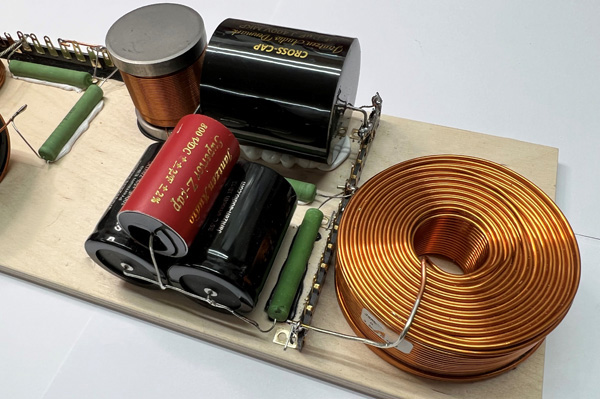
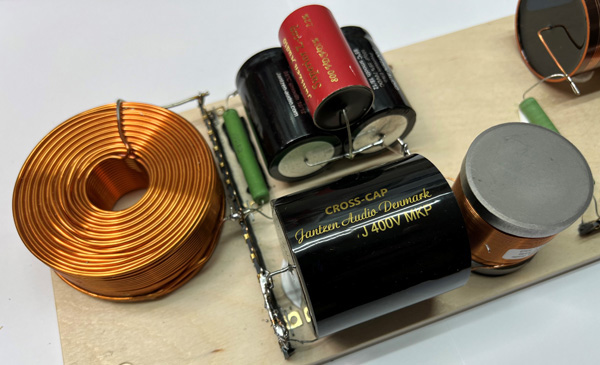
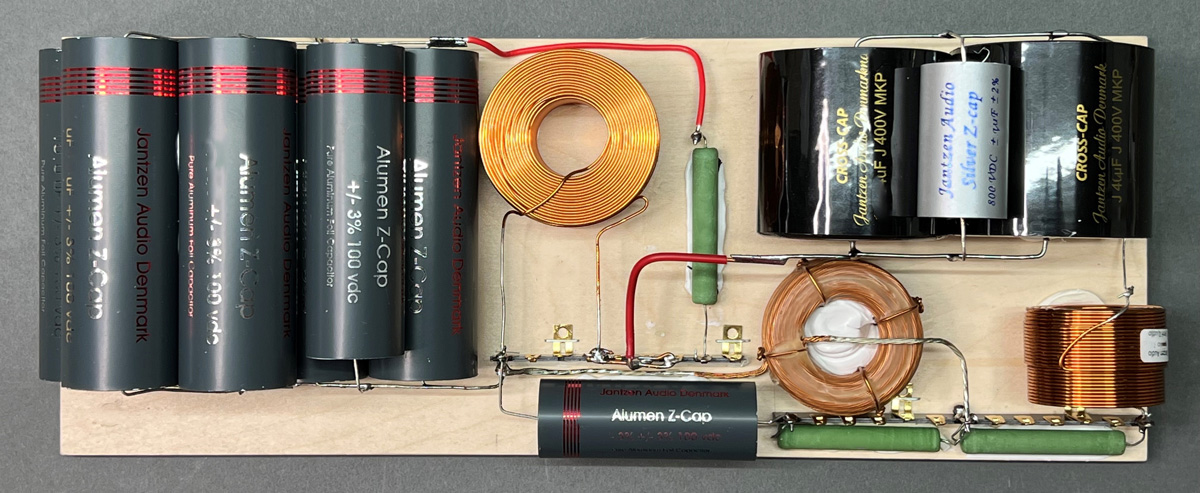
Crossover for D84 driver.
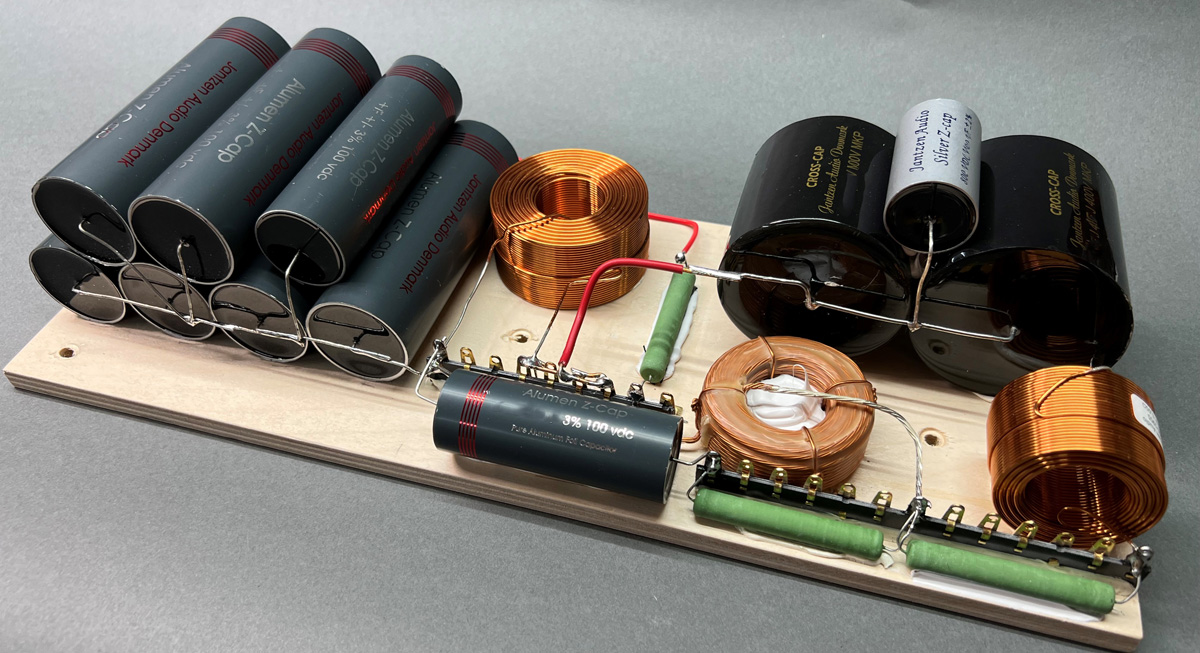
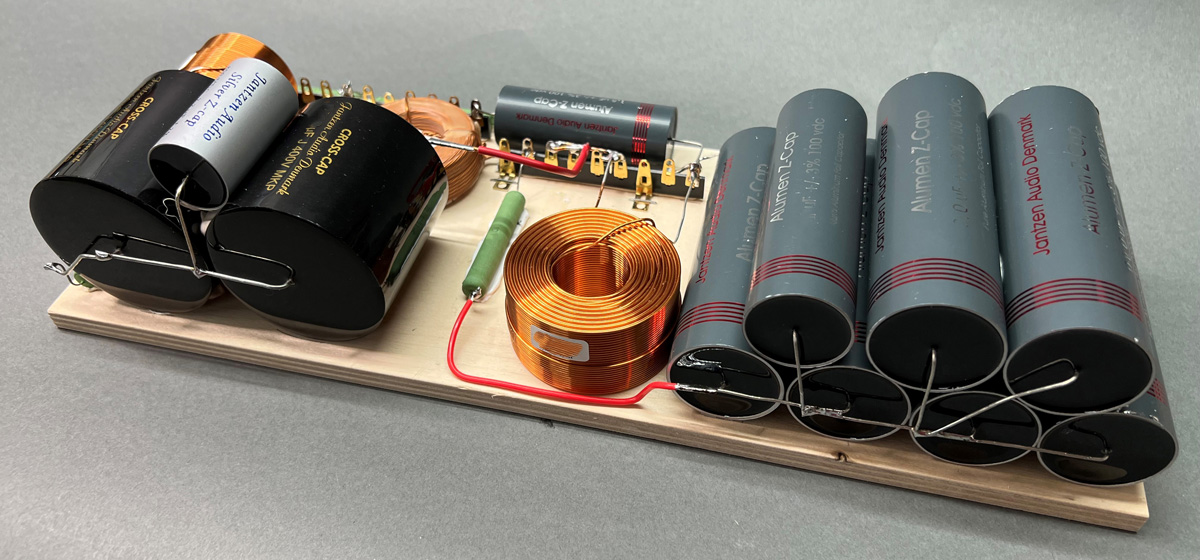
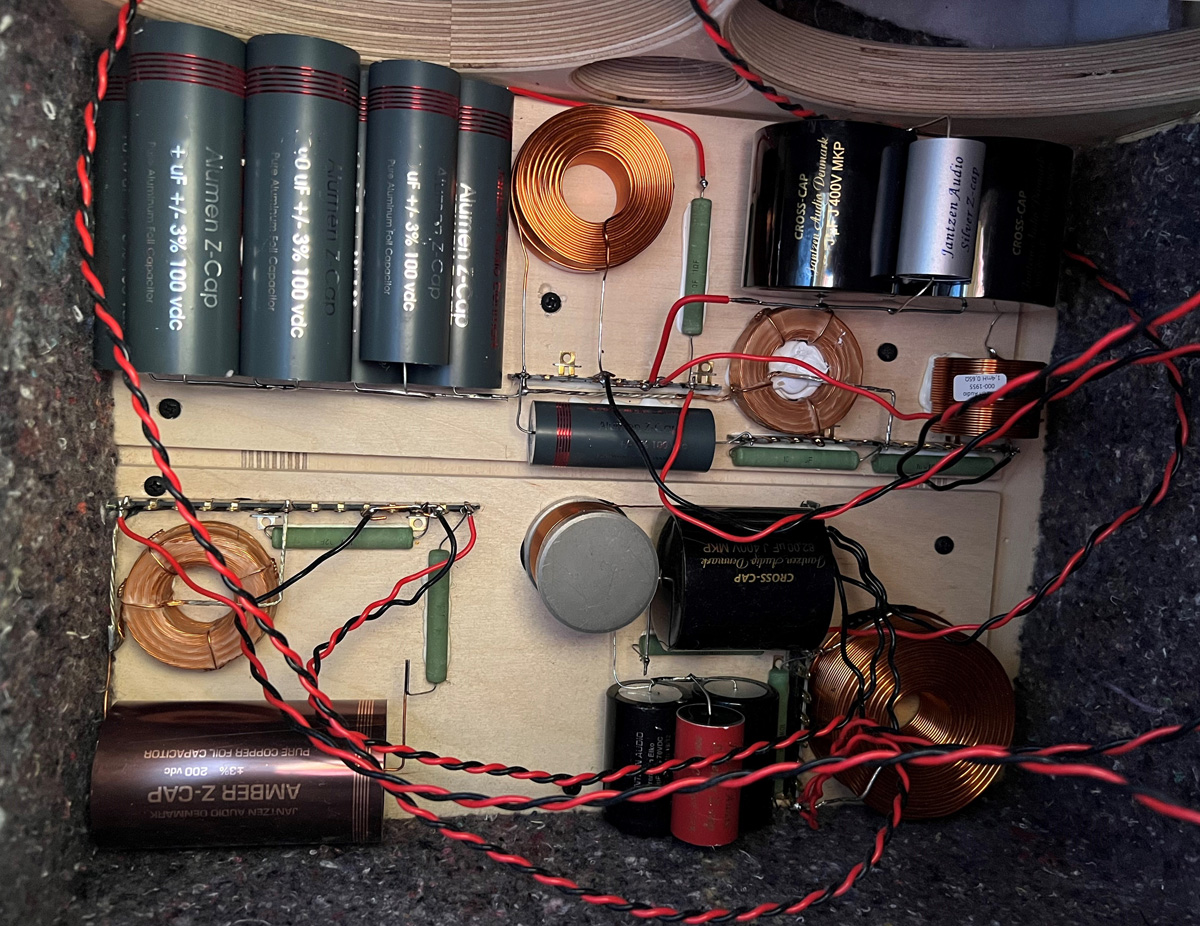
The input wire goes to the 21WE/D24 board and from here to the D84
board.
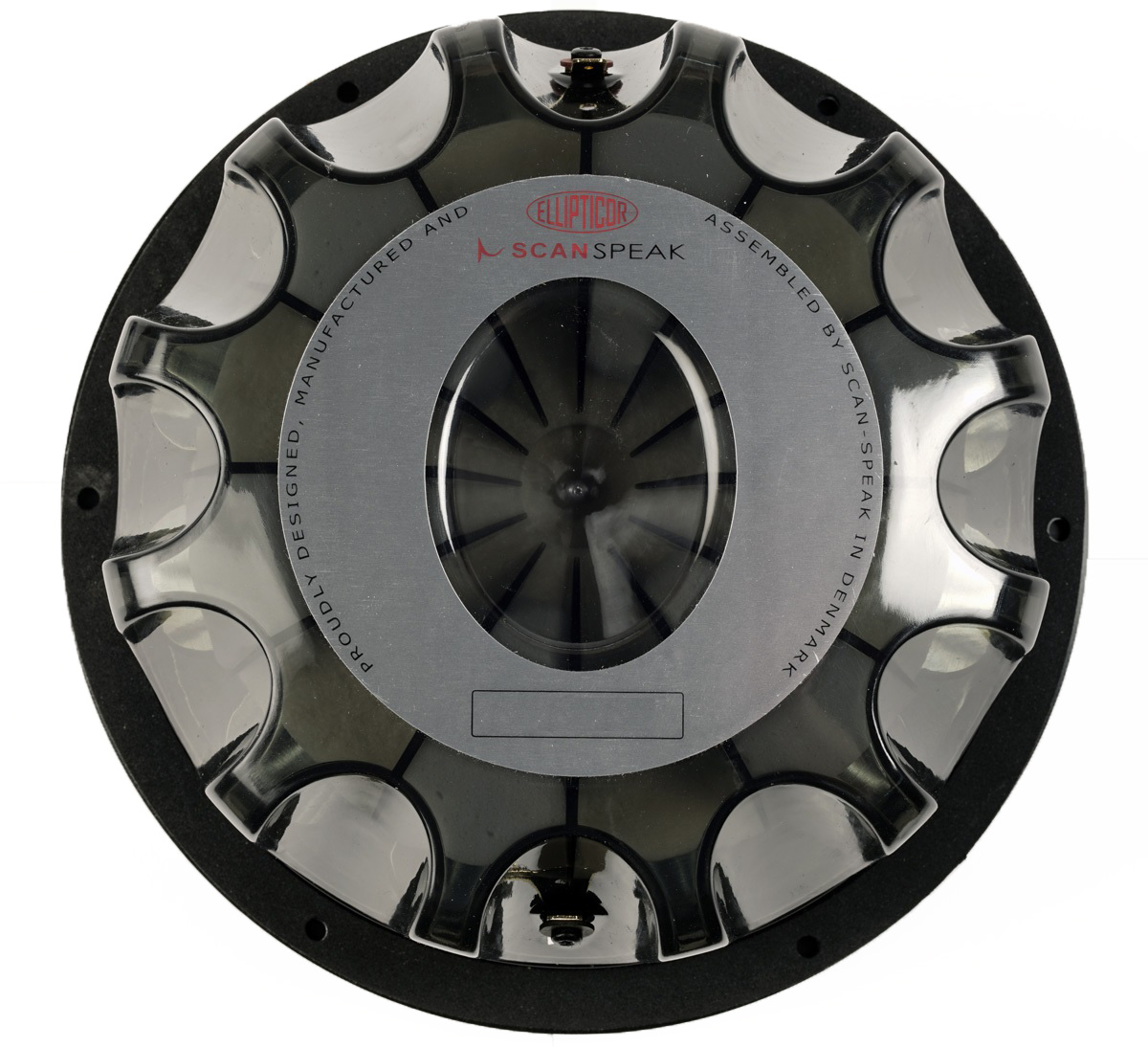
|































































